Intel Core i5-6200U vs Intel Core i5-4200M
|
|
|
|
|
Intel Core i5-6200U vs Intel Core i5-4200M
Comparison of the technical characteristics between the processors, with the Intel Core i5-6200U on one side and the Intel Core i5-4200M on the other side. The first is dedicated to the laptop sector, It has 2 cores, 4 threads, a maximum frequency of 2,8GHz. The second is used on the laptop segment, it has a total of 2 cores, 4 threads, its turbo frequency is set to 3,1 GHz. The following table also compares the lithography, the number of transistors (if indicated), the amount of cache memory, the maximum RAM memory capacity, the type of memory accepted, the release date, the maximum number of PCIe lanes, the values obtained in Geekbench 4 and Cinebench R15.
Note: Commissions may be earned from the links above.
This page contains references to products from one or more of our advertisers. We may receive compensation when you click on links to those products. For an explanation of our advertising policy, please visit this page.
Specifications:
| Processor | Intel Core i5-6200U | Intel Core i5-4200M | ||||||
| Market (main) | Laptop | Laptop | ||||||
| ISA | x86-64 (64 bit) | x86-64 (64 bit) | ||||||
| Microarchitecture | Skylake | Haswell | ||||||
| Core name | Skylake-U | Haswell-MB | ||||||
| Family | Core i5-6000 | Core i5-4000 | ||||||
| Part number(s), S-Spec | FJ8066201930409, SR2EY |
CW8064701486606, SR1HA |
||||||
| Release date | Q3 2015 | Q4 2013 | ||||||
| Lithography | 14 nm | 22 nm | ||||||
| Transistors | 1.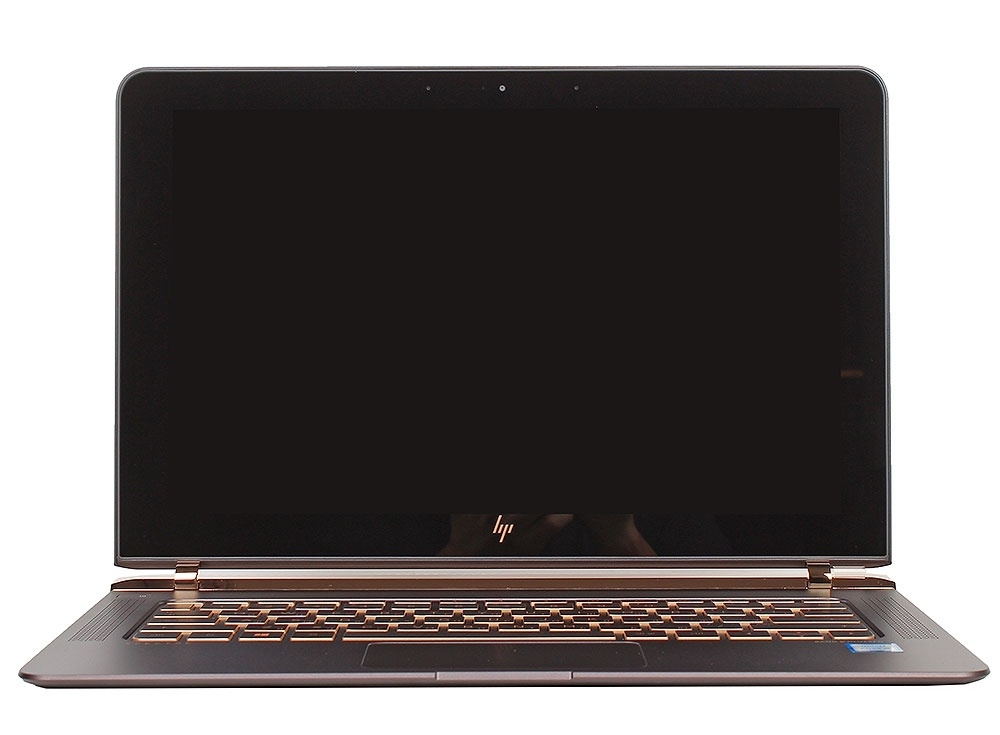 750.000.000 750.000.000 |
960.000.000 | ||||||
| Cores | 2 | 2 | ||||||
| Threads | 4 | 4 | ||||||
| Base frequency | 2,3 GHz | 2,5 GHz | ||||||
| Turbo frequency | 2,8 GHz | 3,1 GHz | ||||||
| Bus speed | 4 GT/s | 5 GT/s | ||||||
| Cache memory | 3 MB | 3 MB | ||||||
| Max memory capacity | 32 GB | 32 GB | ||||||
| Memory types | DDR4-2133, LPDDR3-1866, DDR3L-1600 |
DDR3L 1333/1600 | ||||||
| Max # of memory channels | 2 | 2 | ||||||
| Max memory bandwidth | 34,1 GB/s | 25,6 GB/s | ||||||
| Max PCIe lanes | 12 | 16 | ||||||
| TDP | 15 W | 37 W | ||||||
| GPU integrated graphics | Intel HD Graphics 520 | Intel HD Graphics 4600 Mobile | ||||||
| GPU execution units | 24 | 20 | ||||||
| GPU shading units | 192 | 160 | ||||||
| GPU base clock | 300 MHz | 400 MHz | ||||||
| GPU boost clock | 1000 MHz | 1150 MHz | ||||||
| GPU FP32 floating point | 403,2 GFLOPS | 352 GFLOPS | ||||||
| Socket | BGA1356 | PGA946 | ||||||
| Maximum temperature | 100°C | 100°C | ||||||
| CPU-Z single thread | 279 | 307 | ||||||
| CPU-Z multi thread | 785 | 814 | ||||||
| Cinebench R15 single thread | 115 | 116 | ||||||
| Cinebench R15 multi-thread | 282 | 285 | ||||||
| Cinebench R20 single thread | 270 | 232 | ||||||
| Cinebench R20 multi-thread | 663 | 638 | ||||||
| Cinebench R23 single thread | 674 | 602 | ||||||
| Cinebench R23 multi-thread | 1.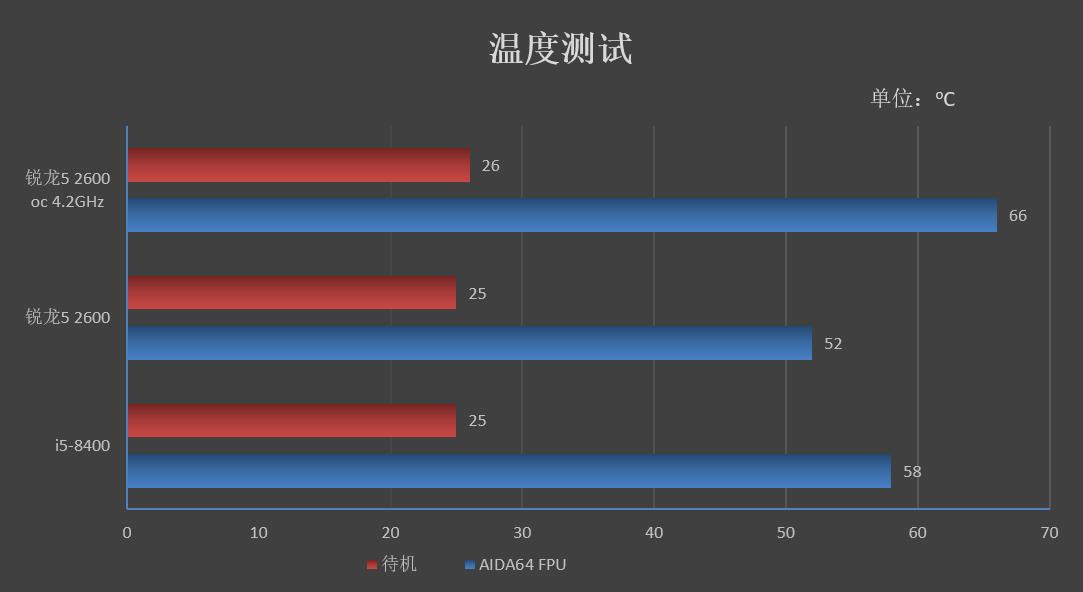 685 685 |
1.453 | ||||||
| PassMark single thread | 1.583 | 1.639 | ||||||
| PassMark CPU Mark | 3.014 | 2.787 | ||||||
| (Windows 64-bit) Geekbench 4 single core |
2.857 | 3.947 | ||||||
| (Windows 64-bit) Geekbench 4 multi-core |
5.570 | 5.572 | ||||||
| (SGEMM) GFLOPS performance |
93,5 GFLOPS | 94,7 GFLOPS | ||||||
| (Multi-core / watt performance) Performance / watt ratio |
371 pts / W | 151 pts / W | ||||||
| Amazon | ||||||||
| eBay |
Note: Commissions may be earned from the links above.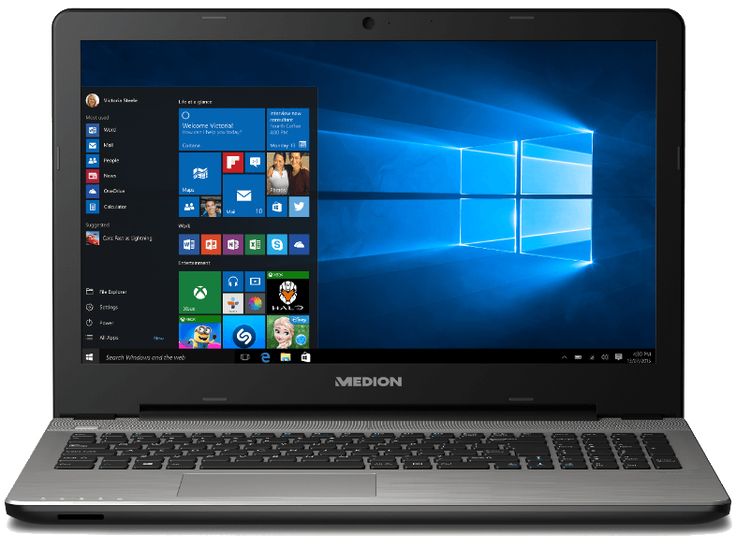
We can better compare what are the technical differences between the two processors.
Price: For technical reasons, we cannot currently display a price less than 24 hours, or a real-time price. This is why we prefer for the moment not to show a price. You should refer to the respective online stores for the latest price, as well as availability.
We see that the two processors have an equivalent number of cores, the turbo frequency of Intel Core i5-4200M is bigger, that the PDT of Intel Core i5-6200U is lower. The Intel Core i5-6200U was designed earlier.
Performances :
Performance comparison between the two processors, for this we consider the results generated on benchmark software such as Geekbench 4.
| CPU-Z — Multi-thread & single thread score | |
|---|---|
| Intel Core i5-4200M |
307 814 |
| Intel Core i5-6200U |
279 785 |
In single core, the difference is 10%. In multi-core, the difference in terms of gap is 4%.
In multi-core, the difference in terms of gap is 4%.
Note: Commissions may be earned from the links above. These scores are only an
average of the performances got with these processors, you may get different results.
CPU-Z is a system information software that provides the name of the processor, its model number, the codename, the cache levels, the package, the process. It can also gives data about the mainboard, the memory. It makes real time measurement, with finally a benchmark for the single thread, as well as for the multi thread.
| Cinebench R15 — Multi-thread & single thread score | |
|---|---|
| Intel Core i5-4200M |
116 285 |
| Intel Core i5-6200U |
115 282 |
In single core, the difference is 1%. In multi-core, the difference in terms of gap is 1%.
Note: Commissions may be earned from the links above. These scores are only an
average of the performances got with these processors, you may get different results.
Cinebench R15 evaluates the performance of CPU calculations by restoring a photorealistic 3D scene. The scene has 2,000 objects, 300,000 polygons, uses sharp and fuzzy reflections, bright areas, shadows, procedural shaders, antialiasing, and so on. The faster the rendering of the scene is created, the more powerful the PC is, with a high number of points.
| Cinebench R20 — Multi-thread & single thread score | |
|---|---|
| Intel Core i5-6200U |
270 663 |
| Intel Core i5-4200M |
232 638 |
In single core, the difference is 16%. In multi-core, the differential gap is 4%.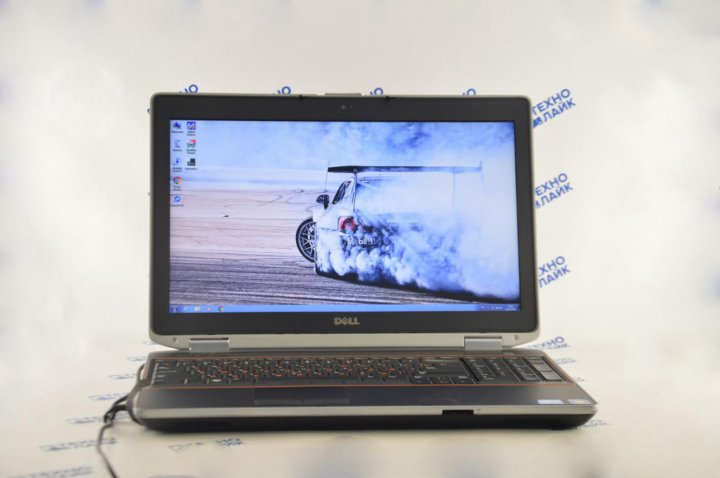
Note: Commissions may be earned from the links above. These scores are only an
average of the performances got with these processors, you may get different results.
Cinebench R20 is a multi-platform test software which allows to evaluate the hardware capacities of a device such as a computer, a tablet, a server. This version of Cinebench takes into account recent developments in processors with multiple cores and the latest improvements in rendering techniques. The evaluation is ultimately even more relevant.
| Cinebench R23 — Multi-thread & single thread score | |
|---|---|
| Intel Core i5-6200U |
674 1.685 |
| Intel Core i5-4200M |
602 1.453 |
In single core, the difference is 12%. In multi-core, the differential gap is 16%.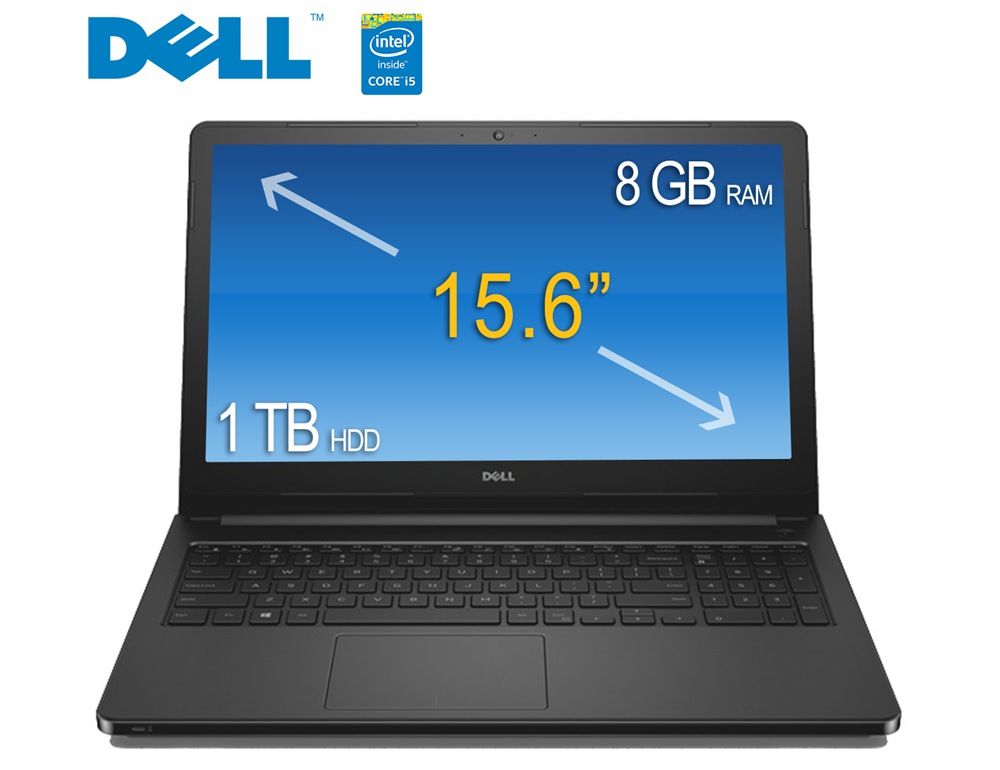
Note: Commissions may be earned from the links above. These scores are only an
average of the performances got with these processors, you may get different results.
Cinebench R23 is cross-platform testing software that allows you to assess the hardware capabilities of a device such as a computer, tablet, server. This version of Cinebench takes into account recent developments in processors with multiple cores and the latest improvements in rendering techniques. The evaluation is ultimately even more relevant. The test scene contains no less than 2,000 objects and more than 300,000 polygons in total.
| PassMark — CPU Mark & single thread | |
|---|---|
| Intel Core i5-6200U |
1.583 3.014 |
| Intel Core i5-4200M |
1.639 2.787 |
In single core, the difference is -3%. In multi-core, the differential gap is 8%.
In multi-core, the differential gap is 8%.
Note: Commissions may be earned from the links above. These scores are only an
average of the performances got with these processors, you may get different results.
PassMark is a benchmarking software that performs several performance tests including prime numbers, integers, floating point, compression, physics, extended instructions, encoding, sorting. The higher the score is, the higher is the device capacity.
On Windows 64-bit:
| Geekbench 4 — Multi-core & single core score — Windows 64-bit | |
|---|---|
| Intel Core i5-4200M |
3.947 5.572 |
| Intel Core i5-6200U |
2.857 5.570 |
In single core, the difference is 38%. In multi-core, the difference in terms of gap is 0%.
On Linux 64-bit:
| Geekbench 4 — Multi-core & single core score — Linux 64-bit | |
|---|---|
| Intel Core i5-6200U |
3.399 6.231 |
| Intel Core i5-4200M |
2.953 5.168 |
In single core, the difference is 15%. In multi-core, the differential gap is 21%.
On Android 64-bit:
| Geekbench 4 — Multi-core & single core score — Android 64-bit | |
|---|---|
| Intel Core i5-4200M |
3.760 7.206 |
| Intel Core i5-6200U |
3.103 5.107 |
In single core, the difference is 21%. In multi-core, the difference in terms of gap is 41%.
On Mac OS X 64-bit:
| Geekbench 4 — Multi-core & single core score — Mac OS X 64-bit | |
|---|---|
| Intel Core i5-4200M |
3.  289 2896.216 |
| Intel Core i5-6200U |
3.048 5.949 |
In single core, the difference is 8%. In multi-core, the difference in terms of gap is 4%.
Note: Commissions may be earned from the links above. These scores are only an
average of the performances got with these processors, you may get different results.
Geekbench 4 is a complete benchmark platform with several types of tests, including data compression, images, AES encryption, SQL encoding, HTML, PDF file rendering, matrix computation, Fast Fourier Transform, 3D object simulation, photo editing, memory testing. This allows us to better visualize the respective power of these devices. For each result, we took an average of 250 values on the famous benchmark software.
Equivalence:
Intel Core i5-6200U AMD equivalentIntel Core i5-4200M AMD equivalent
See also:
Intel Core i5-4200HIntel Core i5-4200U
Intel Core i5-6200U vs Intel Core i5-4200M
Comparative analysis of Intel Core i5-6200U and Intel Core i5-4200M processors for all known characteristics in the following categories: Essentials, Performance, Memory, Graphics, Graphics interfaces, Graphics image quality, Graphics API support, Compatibility, Peripherals, Security & Reliability, Advanced Technologies, Virtualization.
Benchmark processor performance analysis: PassMark — Single thread mark, PassMark — CPU mark, Geekbench 4 — Single Core, Geekbench 4 — Multi-Core, 3DMark Fire Strike — Physics Score, CompuBench 1.5 Desktop — Ocean Surface Simulation (Frames/s), CompuBench 1.5 Desktop — T-Rex (Frames/s), CompuBench 1.5 Desktop — Video Composition (Frames/s), CompuBench 1.5 Desktop — Bitcoin Mining (mHash/s), GFXBench 4.0 — Car Chase Offscreen (Frames), GFXBench 4.0 — Manhattan (Frames), GFXBench 4.0 — T-Rex (Frames), GFXBench 4.0 — Car Chase Offscreen (Fps), GFXBench 4.0 — Manhattan (Fps), GFXBench 4.0 — T-Rex (Fps), CompuBench 1.5 Desktop — Face Detection (mPixels/s).
Intel Core i5-6200U
Buy on Amazon
vs
Intel Core i5-4200M
Buy on Amazon
Differences
Reasons to consider the Intel Core i5-6200U
- CPU is newer: launch date 2 year(s) 2 month(s) later
- A newer manufacturing process allows for a more powerful, yet cooler running processor: 14 nm vs 22 nm
- 2.
 5x lower typical power consumption: 15 Watt vs 37 Watt
5x lower typical power consumption: 15 Watt vs 37 Watt - Around 9% better performance in PassMark — CPU mark: 3008 vs 2772
- 7.4x better performance in CompuBench 1.5 Desktop — Ocean Surface Simulation (Frames/s): 19.309 vs 2.624
- Around 9% better performance in CompuBench 1.5 Desktop — T-Rex (Frames/s): 0.28 vs 0.256
- Around 58% better performance in CompuBench 1.5 Desktop — Video Composition (Frames/s): 2.306 vs 1.464
- 3x better performance in CompuBench 1.5 Desktop — Bitcoin Mining (mHash/s): 7.135 vs 2.387
- Around 23% better performance in GFXBench 4.0 — Car Chase Offscreen (Frames): 1324 vs 1080
- Around 26% better performance in GFXBench 4.0 — T-Rex (Frames): 4174 vs 3318
- Around 23% better performance in GFXBench 4.0 — Car Chase Offscreen (Fps): 1324 vs 1080
- Around 26% better performance in GFXBench 4.0 — T-Rex (Fps): 4174 vs 3318
| Launch date | 1 September 2015 vs 4 June 2013 |
| Manufacturing process technology | 14 nm vs 22 nm |
| Thermal Design Power (TDP) | 15 Watt vs 37 Watt |
| PassMark — CPU mark | 3008 vs 2772 |
CompuBench 1. 5 Desktop — Ocean Surface Simulation (Frames/s) 5 Desktop — Ocean Surface Simulation (Frames/s) |
19.309 vs 2.624 |
| CompuBench 1.5 Desktop — T-Rex (Frames/s) | 0.28 vs 0.256 |
| CompuBench 1.5 Desktop — Video Composition (Frames/s) | 2.306 vs 1.464 |
| CompuBench 1.5 Desktop — Bitcoin Mining (mHash/s) | 7.135 vs 2.387 |
| GFXBench 4.0 — Car Chase Offscreen (Frames) | 1324 vs 1080 |
| GFXBench 4.0 — T-Rex (Frames) | 4174 vs 3318 |
| GFXBench 4.0 — Car Chase Offscreen (Fps) | 1324 vs 1080 |
GFXBench 4. 0 — T-Rex (Fps) 0 — T-Rex (Fps) |
4174 vs 3318 |
Reasons to consider the Intel Core i5-4200M
- Around 11% higher clock speed: 3.10 GHz vs 2.80 GHz
- Around 2% better performance in PassMark — Single thread mark: 1604 vs 1578
- Around 11% better performance in Geekbench 4 — Single Core: 660 vs 596
- Around 1% better performance in Geekbench 4 — Multi-Core: 1425 vs 1415
- Around 35% better performance in GFXBench 4.0 — Manhattan (Frames): 3354 vs 2479
- Around 35% better performance in GFXBench 4.0 — Manhattan (Fps): 3354 vs 2479
| Maximum frequency | 3.10 GHz vs 2.80 GHz |
| PassMark — Single thread mark | 1604 vs 1578 |
| Geekbench 4 — Single Core | 660 vs 596 |
| Geekbench 4 — Multi-Core | 1425 vs 1415 |
GFXBench 4. 0 — Manhattan (Frames) 0 — Manhattan (Frames) |
3354 vs 2479 |
| GFXBench 4.0 — Manhattan (Fps) | 3354 vs 2479 |
Compare benchmarks
CPU 1: Intel Core i5-6200U
CPU 2: Intel Core i5-4200M
| PassMark — Single thread mark |
|
|
|||
| PassMark — CPU mark |
|
|
|||
| Geekbench 4 — Single Core |
|
|
|||
| Geekbench 4 — Multi-Core |
|
|
|||
CompuBench 1.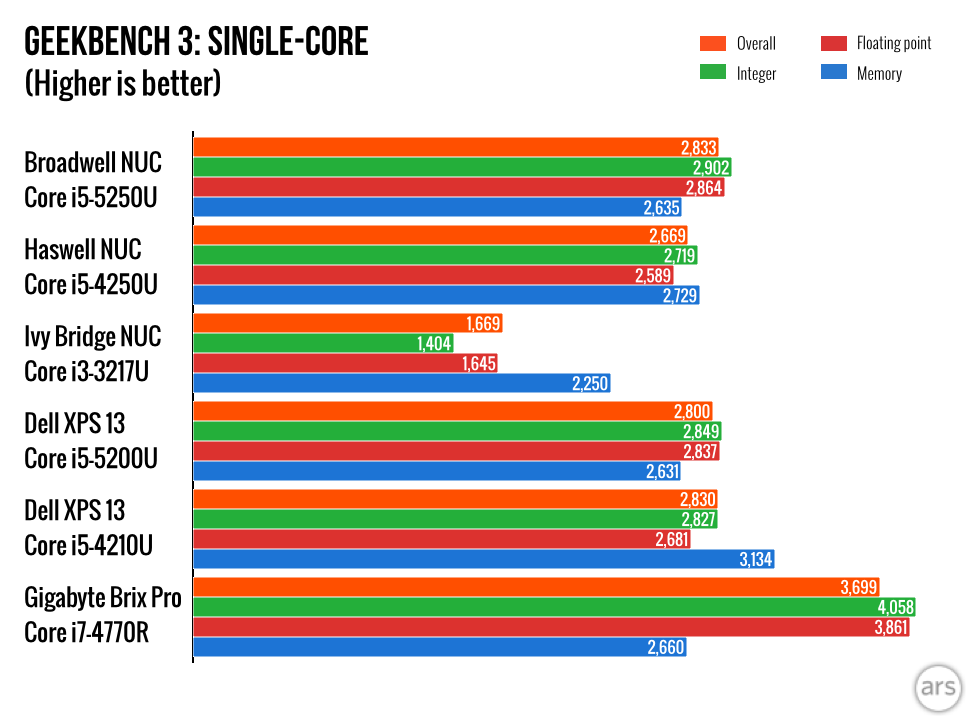 5 Desktop — Ocean Surface Simulation (Frames/s) 5 Desktop — Ocean Surface Simulation (Frames/s) |
|
|
|||
| CompuBench 1.5 Desktop — T-Rex (Frames/s) |
|
|
|||
| CompuBench 1.5 Desktop — Video Composition (Frames/s) |
|
|
|||
CompuBench 1. 5 Desktop — Bitcoin Mining (mHash/s) 5 Desktop — Bitcoin Mining (mHash/s) |
|
|
|||
| GFXBench 4.0 — Car Chase Offscreen (Frames) |
|
|
|||
| GFXBench 4.0 — Manhattan (Frames) |
|
|
|||
GFXBench 4.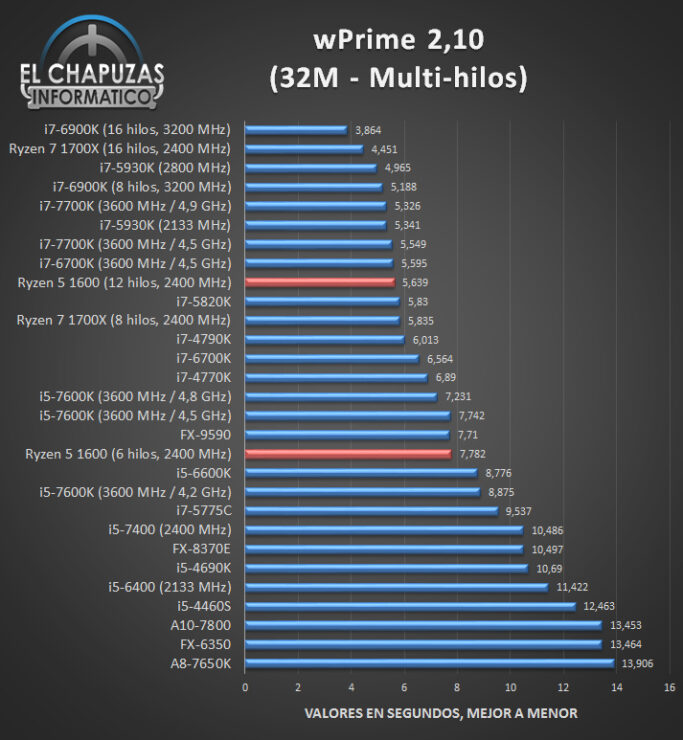 0 — T-Rex (Frames) 0 — T-Rex (Frames) |
|
|
|||
| GFXBench 4.0 — Car Chase Offscreen (Fps) |
|
|
|||
| GFXBench 4.0 — Manhattan (Fps) |
|
|
|||
GFXBench 4. 0 — T-Rex (Fps) 0 — T-Rex (Fps) |
|
|
| Name | Intel Core i5-6200U | Intel Core i5-4200M |
|---|---|---|
| PassMark — Single thread mark | 1578 | 1604 |
| PassMark — CPU mark | 3008 | 2772 |
| Geekbench 4 — Single Core | 596 | 660 |
| Geekbench 4 — Multi-Core | 1415 | 1425 |
| 3DMark Fire Strike — Physics Score | 0 | |
CompuBench 1. 5 Desktop — Ocean Surface Simulation (Frames/s) 5 Desktop — Ocean Surface Simulation (Frames/s) |
19.309 | 2.624 |
| CompuBench 1.5 Desktop — T-Rex (Frames/s) | 0.28 | 0.256 |
| CompuBench 1.5 Desktop — Video Composition (Frames/s) | 2.306 | 1.464 |
| CompuBench 1.5 Desktop — Bitcoin Mining (mHash/s) | 7.135 | 2.387 |
| GFXBench 4.0 — Car Chase Offscreen (Frames) | 1324 | 1080 |
| GFXBench 4.0 — Manhattan (Frames) | 2479 | 3354 |
GFXBench 4. 0 — T-Rex (Frames) 0 — T-Rex (Frames) |
4174 | 3318 |
| GFXBench 4.0 — Car Chase Offscreen (Fps) | 1324 | 1080 |
| GFXBench 4.0 — Manhattan (Fps) | 2479 | 3354 |
| GFXBench 4.0 — T-Rex (Fps) | 4174 | 3318 |
| CompuBench 1.5 Desktop — Face Detection (mPixels/s) | 6.335 |
Compare specifications (specs)
| Intel Core i5-6200U | Intel Core i5-4200M | |
|---|---|---|
| Architecture codename | Skylake | Haswell |
| Launch date | 1 September 2015 | 4 June 2013 |
| Launch price (MSRP) | $281 | $225 |
| Place in performance rating | 1350 | 1286 |
| Processor Number | i5-6200U | i5-4200M |
| Series | 6th Generation Intel® Core™ i5 Processors | 4th Generation Intel® Core™ i5 Processors |
| Status | Launched | Launched |
| Vertical segment | Mobile | Mobile |
| Price now | $179.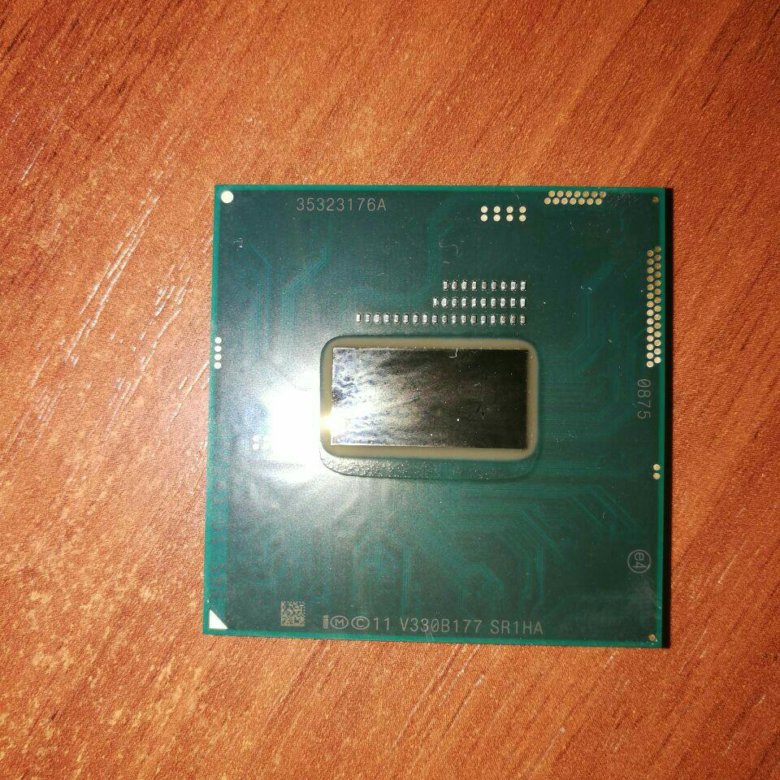 99 99 |
|
| Value for money (0-100) | 6.61 | |
| 64 bit support | ||
| Base frequency | 2.30 GHz | 2.50 GHz |
| Bus Speed | 4 GT/s OPI | 5 GT/s DMI2 |
| Die size | 99 mm | 130 mm |
| L1 cache | 128 KB | 128 KB |
| L2 cache | 512 KB | 512 KB |
| L3 cache | 3 MB | 3072 KB |
| Manufacturing process technology | 14 nm | 22 nm |
| Maximum core temperature | 100°C | 100°C |
| Maximum frequency | 2.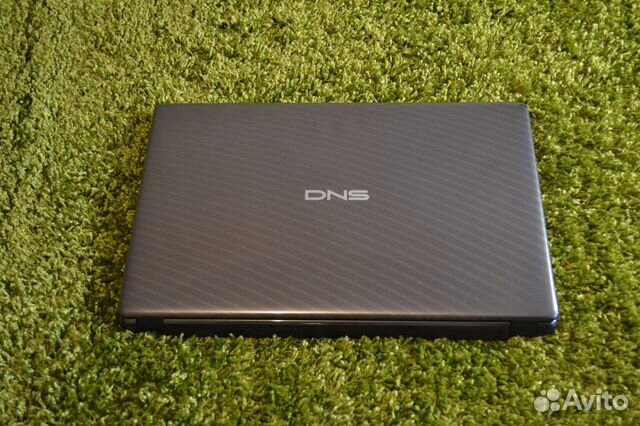 80 GHz 80 GHz |
3.10 GHz |
| Number of cores | 2 | 2 |
| Number of threads | 4 | 4 |
| Transistor count | 960 Million | |
| Max memory channels | 2 | 2 |
| Maximum memory bandwidth | 34.1 GB/s | 25.6 GB/s |
| Maximum memory size | 32 GB | 32 GB |
| Supported memory types | DDR4-2133, LPDDR3-1866, DDR3L-1600 | DDR3L 1333/1600 |
| Device ID | 0x1916 | 0x416 |
| Graphics base frequency | 300 MHz | 400 MHz |
| Graphics max dynamic frequency | 1.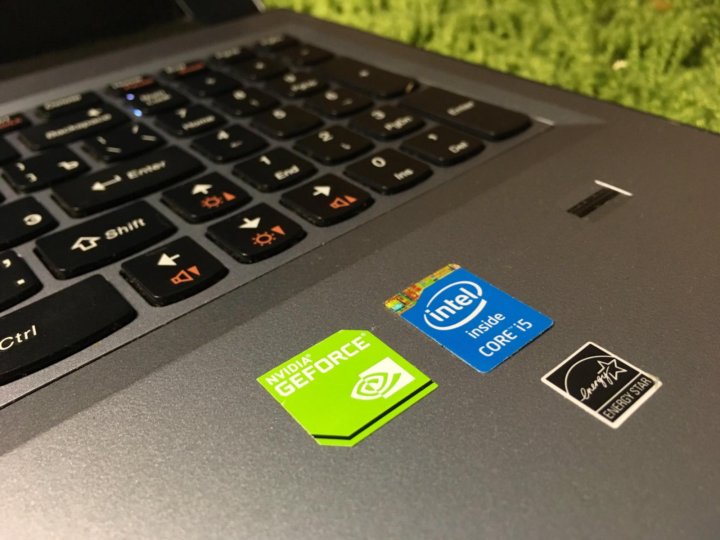 00 GHz 00 GHz |
1.15 GHz |
| Graphics max frequency | 1 GHz | 1.15 GHz |
| Intel® Clear Video HD technology | ||
| Intel® Clear Video technology | ||
| Intel® InTru™ 3D technology | ||
| Intel® Quick Sync Video | ||
| Max video memory | 32 GB | 2 GB |
| Processor graphics | Intel® HD Graphics 520 | Intel® HD Graphics 4600 |
| DisplayPort | ||
| DVI | ||
| eDP | ||
| HDMI | ||
| Number of displays supported | 3 | 3 |
| Wireless Display (WiDi) support | ||
| 4K resolution support | ||
| Max resolution over DisplayPort | [email protected] | [email protected] |
| Max resolution over eDP | [email protected] | |
Max resolution over HDMI 1. 4 4 |
[email protected] | [email protected] |
| Max resolution over VGA | N / A | [email protected] |
| Max resolution over WiDi | 1080p | |
| DirectX | 12 | 11.2/12 |
| OpenGL | 4.5 | 4.3 |
| Configurable TDP-down | 7.5 W | |
| Configurable TDP-down Frequency | 800 MHz | |
| Configurable TDP-up | 25 W | |
| Configurable TDP-up Frequency | 2. 40 GHz 40 GHz |
|
| Low Halogen Options Available | ||
| Max number of CPUs in a configuration | 1 | 1 |
| Package Size | 42mm X 24mm | 37.5mm x 37.5mm x 4.7mm |
| Sockets supported | FCBGA1356 | FCPGA946 |
| Thermal Design Power (TDP) | 15 Watt | 37 Watt |
| Max number of PCIe lanes | 12 | 16 |
| PCI Express revision | 3.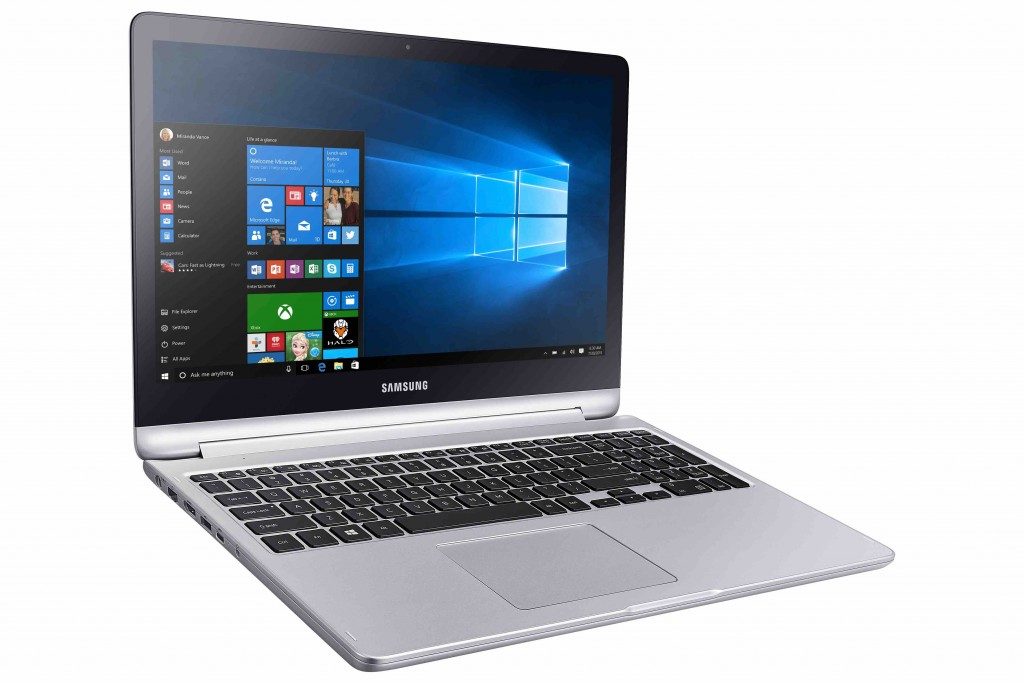 0 0 |
3 |
| PCIe configurations | 1×4, 2×2, 1×2+2×1 and 4×1 | 1×16 or 2×8 or 1×8 2×4 |
| Execute Disable Bit (EDB) | ||
| Intel® Identity Protection technology | ||
| Intel® Memory Protection Extensions (Intel® MPX) | ||
| Intel® OS Guard | ||
| Intel® Secure Key technology | ||
| Intel® Software Guard Extensions (Intel® SGX) | ||
| Intel® Trusted Execution technology (TXT) | ||
| Anti-Theft technology | ||
| Enhanced Intel SpeedStep® technology | ||
| Idle States | ||
| Instruction set extensions | Intel® SSE4.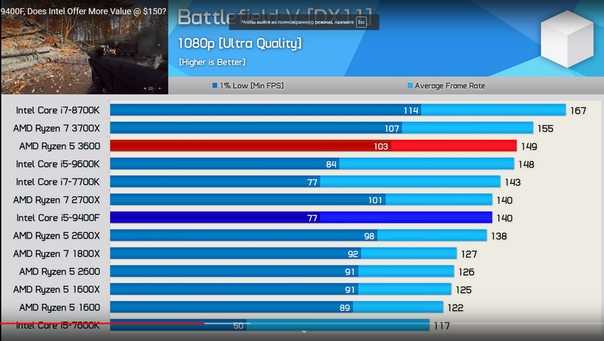 1, Intel® SSE4.2, Intel® AVX2 1, Intel® SSE4.2, Intel® AVX2 |
Intel® SSE4.1, Intel® SSE4.2, Intel® AVX2 |
| Intel 64 | ||
| Intel® Advanced Vector Extensions (AVX) | ||
| Intel® AES New Instructions | ||
| Intel® Flex Memory Access | ||
| Intel® Hyper-Threading technology | ||
| Intel® My WiFi technology | ||
| Intel® Smart Response technology | ||
| Intel® Stable Image Platform Program (SIPP) | ||
| Intel® TSX-NI | ||
| Intel® Turbo Boost technology | ||
| Intel® vPro™ Platform Eligibility | ||
| Thermal Monitoring | ||
| AMD Virtualization (AMD-V™) | ||
| Intel® Virtualization Technology (VT-x) | ||
| Intel® Virtualization Technology for Directed I/O (VT-d) | ||
| Intel® VT-x with Extended Page Tables (EPT) |
HP ProBook 440 G3 14″ Intel Core i5-6200U 2.
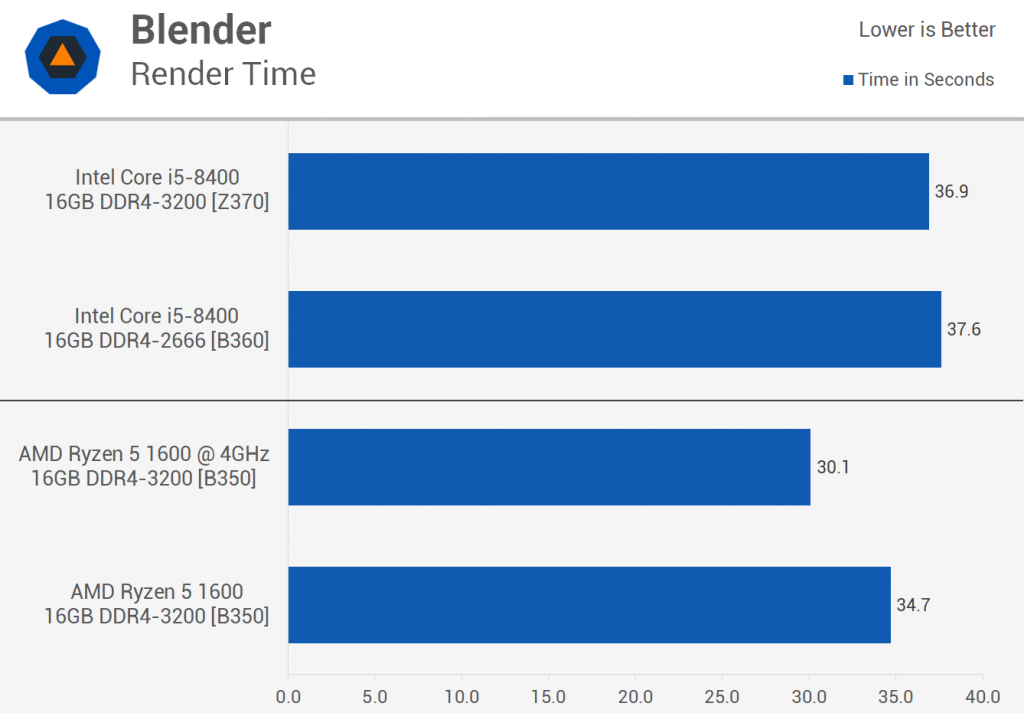 4GHz / 4GB / 500GB vs HP ProBook 640 G1 14″ Intel Core i5-4200M 2.5GHz / 8GB / 500GB: What is the difference?
4GHz / 4GB / 500GB vs HP ProBook 640 G1 14″ Intel Core i5-4200M 2.5GHz / 8GB / 500GB: What is the difference?
37points
HP ProBook 440 G3 14″ Intel Core i5-6200U 2.4GHz / 4GB / 500GB
33points
HP ProBook 640 G1 14″ Intel Core i5-4200M 2.5GHz / 8GB / 500GB
vs
108 facts in comparison
HP ProBook 440 G3 14″ Intel Core i5-6200U 2.4GHz / 4GB / 500GB
HP ProBook 640 G1 14″ Intel Core i5-4200M 2.5GHz / 8GB / 500GB
Why is HP ProBook 440 G3 14″ Intel Core i5-6200U 2.4GHz / 4GB / 500GB better than HP ProBook 640 G1 14″ Intel Core i5-4200M 2.5GHz / 8GB / 500GB?
- Has a backlit keyboard?
- 1.98x higher resolution?
1920 x 1080pxvs1366 x 768px - 526.8g lighter?
1.54kgvs2.07kg - 41.44% higher pixel density?
157ppivs111ppi - 533MHz higher ram speed?
2133MHzvs1600MHz - Has anti-reflection coating?
- Has an HDMI output?
- 5.
 2mm thinner?
2mm thinner?
19.8mmvs25mm
Why is HP ProBook 640 G1 14″ Intel Core i5-4200M 2.5GHz / 8GB / 500GB better than HP ProBook 440 G3 14″ Intel Core i5-6200U 2.4GHz / 4GB / 500GB?
- 4GB more RAM memory?
8GBvs4GB - 6.6h longer battery life?
13.6hvs7h - 2 more USB 3.0 ports?
4vs2 - Has an optical disc drive?
- 1 more memory slots?
2vs1
Which are the most popular comparisons?
HP ProBook 440 G3 14″ Intel Core i5-6200U 2.4GHz / 4GB / 500GB
vs
Lenovo ThinkPad L460 14″ Intel Core i5-6200U 2.3GHz / 8GB / 256GB
HP ProBook 640 G1 14″ Intel Core i5-4200M 2.5GHz / 8GB / 500GB
vs
HP ProBook 650 G1 15.6″ Intel Core i5-4300M 2.6GHz / 8GB / 750GB
HP ProBook 440 G3 14″ Intel Core i5-6200U 2.4GHz / 4GB / 500GB
vs
HP ProBook 450 G4 15.6″ Intel Core i5 7200U 2.5GHz / 4GB / 500GB
HP ProBook 640 G1 14″ Intel Core i5-4200M 2. 5GHz / 8GB / 500GB
5GHz / 8GB / 500GB
vs
Lenovo ThinkPad T450s 14″ Intel Core i5-5200U 2.2GHz / 4GB / 500GB
HP ProBook 440 G3 14″ Intel Core i5-6200U 2.4GHz / 4GB / 500GB
vs
Lenovo B40-80 14″ Intel Core i5-5200U 2.2GHz / 4GB / 500GB
HP ProBook 640 G1 14″ Intel Core i5-4200M 2.5GHz / 8GB / 500GB
vs
Lenovo ThinkPad T540p 15.6″ Intel Core i3-4000M 2.4GHz / 4GB / 128GB
HP ProBook 440 G3 14″ Intel Core i5-6200U 2.4GHz / 4GB / 500GB
vs
Lenovo ThinkPad T450s 14″ Intel Core i5-5200U 2.2GHz / 4GB / 500GB
HP ProBook 640 G1 14″ Intel Core i5-4200M 2.5GHz / 8GB / 500GB
vs
Toshiba Portege Z30 13.3″ Intel Core i5-4210U 1.7GHz / 8GB / 128GB
HP ProBook 440 G3 14″ Intel Core i5-6200U 2.4GHz / 4GB / 500GB
vs
HP ProBook 4540s 15.6″ Intel Core i7-3632QM 2.2GHz / 8GB / 750GB
HP ProBook 640 G1 14″ Intel Core i5-4200M 2.5GHz / 8GB / 500GB
vs
HP ProBook 645 14″ G1 AMD A8-5550M 2.1GHz / 4GB / 500GB
HP ProBook 440 G3 14″ Intel Core i5-6200U 2.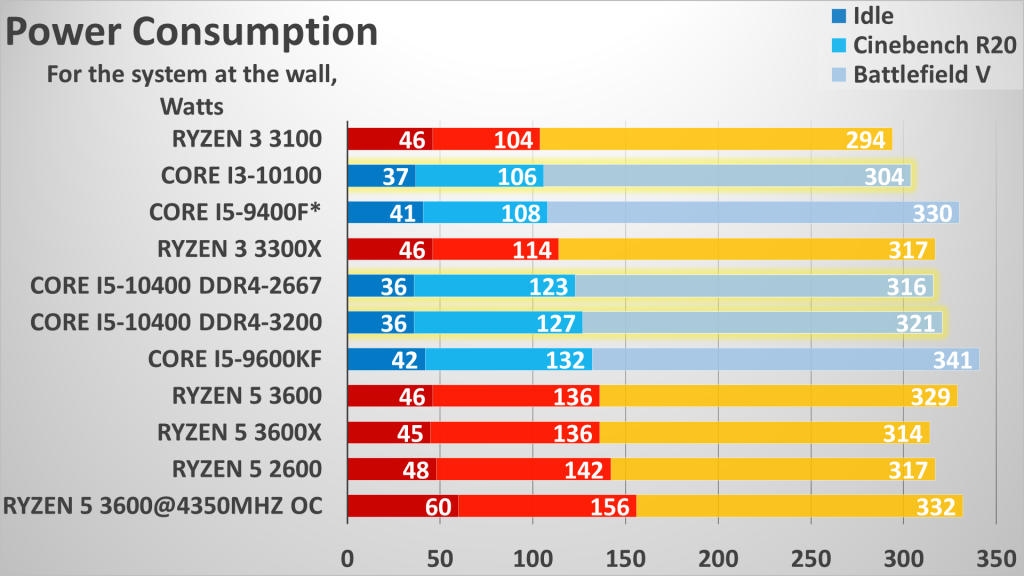 4GHz / 4GB / 500GB
4GHz / 4GB / 500GB
vs
Lenovo IdeaPad 330 15.6” AMD Ryzen 3 2200U 2.5GHz / 4GB RAM / 1TB HDD
HP ProBook 640 G1 14″ Intel Core i5-4200M 2.5GHz / 8GB / 500GB
vs
HP ProBook 6470b 14″ Intel Core i5-3210M 2.5GHz / 4GB / 320GB
HP ProBook 440 G3 14″ Intel Core i5-6200U 2.4GHz / 4GB / 500GB
vs
Lenovo ThinkPad X260 12.5″ Intel Core i7 6600U 2.6GHz / 4GB / 500GB
HP ProBook 640 G1 14″ Intel Core i5-4200M 2.5GHz / 8GB / 500GB
vs
Lenovo IdeaPad 330 15.6” Intel Core i3-8130U 2.2GHz / 4GB RAM / 2TB HDD
HP ProBook 440 G3 14″ Intel Core i5-6200U 2.4GHz / 4GB / 500GB
vs
Samsung Notebook Odyssey 15.6″ Intel Core i7-6500U 2.5GHz / 32GB / 256GB
HP ProBook 640 G1 14″ Intel Core i5-4200M 2.5GHz / 8GB / 500GB
vs
Samsung Galaxy Book Go 14″ Qualcomm Snapdragon 7c Gen 2 / 4GB RAM / 128GB SSD
HP ProBook 640 G1 14″ Intel Core i5-4200M 2.5GHz / 8GB / 500GB
vs
Lenovo ThinkPad X250 12.5″ Intel Core i7-5600U 2. 6GHz / 8GB / 128GB
6GHz / 8GB / 128GB
HP ProBook 640 G1 14″ Intel Core i5-4200M 2.5GHz / 8GB / 500GB
vs
HP ZBook 14 G2 14″ Intel Core i5-5200U 2.2GHz / 4GB / 256GB
Price comparison
User reviews
Display
1.resolution
1920 x 1080px
1366 x 768px
Resolution is an essential indicator of a screen’s image quality, representing the maximum amount of pixels that can be shown on the screen. The resolution is given as a compound value, comprised of horizontal and vertical pixels.
2.pixel density
157ppi
111ppi
Pixel density is a measurement of a screen’s resolution, expressed as the number of pixels per inch (PPI) on the screen. A higher pixel density translates into more clarity and sharpness for the images rendered on the screen, thus improving the quality of the viewing experience.
3.has a touch screen
✖HP ProBook 440 G3 14″ Intel Core i5-6200U 2. 4GHz / 4GB / 500GB
4GHz / 4GB / 500GB
✖HP ProBook 640 G1 14″ Intel Core i5-4200M 2.5GHz / 8GB / 500GB
You can operate the device easily, by pressing the screen with your fingers.
4.has anti-reflection coating
✔HP ProBook 440 G3 14″ Intel Core i5-6200U 2.4GHz / 4GB / 500GB
✖HP ProBook 640 G1 14″ Intel Core i5-4200M 2.5GHz / 8GB / 500GB
This helps to reduce the reflection from your device.
5.brightness
Unknown. Help us by suggesting a value. (HP ProBook 440 G3 14″ Intel Core i5-6200U 2.4GHz / 4GB / 500GB)
Unknown. Help us by suggesting a value. (HP ProBook 640 G1 14″ Intel Core i5-4200M 2.5GHz / 8GB / 500GB)
A nit is a measurement of the light that a display emits, equal to one candela per square meter. Brighter displays ensure a screen’s contents are easy to read, even in sunny conditions.
6.screen size
The bigger the screen size is, the better the user experience.
7.refresh rate
Unknown. Help us by suggesting a value. (HP ProBook 440 G3 14″ Intel Core i5-6200U 2.4GHz / 4GB / 500GB)
Unknown. Help us by suggesting a value. (HP ProBook 640 G1 14″ Intel Core i5-4200M 2.5GHz / 8GB / 500GB)
The frequency at which the screen is refreshed. Higher frequency results in less flickering (less noise) and more natural movement representation in action-intense scenes.
8.has an LED-backlit display
✔HP ProBook 440 G3 14″ Intel Core i5-6200U 2.4GHz / 4GB / 500GB
✔HP ProBook 640 G1 14″ Intel Core i5-4200M 2.5GHz / 8GB / 500GB
Uses LED backlighting, resulting in better image quality, more vibrant colors and richer blacks.
9.has an IPS screen
✖HP ProBook 440 G3 14″ Intel Core i5-6200U 2.4GHz / 4GB / 500GB
✖HP ProBook 640 G1 14″ Intel Core i5-4200M 2.5GHz / 8GB / 500GB
IPS (In-Plane Switching) is a technology used for LCDs. It was designed to overcome the main limitations of conventional twisted nematic TFT displays: limited viewing angles and low-quality color reproduction. PLS (Plane-to-Line Switching) is a type of IPS screen developed by Samsung, with increased brightness and lower production costs.
It was designed to overcome the main limitations of conventional twisted nematic TFT displays: limited viewing angles and low-quality color reproduction. PLS (Plane-to-Line Switching) is a type of IPS screen developed by Samsung, with increased brightness and lower production costs.
Performance
Random-access memory (RAM) is a form of volatile memory used to store working data and machine code currently in use. It is a quick-access, temporary virtual storage that can be read and changed in any order, thus enabling fast data processing.
2.RAM speed
2133MHz
1600MHz
It can support faster memory, which will give quicker system performance.
3.Uses flash storage
✖HP ProBook 440 G3 14″ Intel Core i5-6200U 2.4GHz / 4GB / 500GB
✖HP ProBook 640 G1 14″ Intel Core i5-4200M 2.5GHz / 8GB / 500GB
Flash-based storage devices such as SSDs have no mechanical components. Due to this, they are typically faster, run silently, and are more shock resistant than traditional HDDs.
4.internal storage
The internal storage refers to the built-in storage space available in a device for system data, apps, and user-generated data. With a large amount of internal storage, you can save more files and apps on your device.
5.CPU speed
2 x 2.4GHz
2 x 2.5GHz
The CPU speed indicates how many processing cycles per second can be executed by a CPU, considering all of its cores (processing units). It is calculated by adding the clock rates of each core or, in the case of multi-core processors employing different microarchitectures, of each group of cores.
6.CPU threads
Unknown. Help us by suggesting a value. (HP ProBook 440 G3 14″ Intel Core i5-6200U 2.4GHz / 4GB / 500GB)
More threads result in faster performance and better multitasking.
7.Is an NVMe SSD
✖HP ProBook 440 G3 14″ Intel Core i5-6200U 2. 4GHz / 4GB / 500GB
4GHz / 4GB / 500GB
✖HP ProBook 640 G1 14″ Intel Core i5-4200M 2.5GHz / 8GB / 500GB
NVMe SSDs use the PCIe interface, which has a higher bandwidth than the SATA interface. This results in much faster read/write speeds compared to SSDs which use the SATA interface.
8.VRAM
Unknown. Help us by suggesting a value. (HP ProBook 440 G3 14″ Intel Core i5-6200U 2.4GHz / 4GB / 500GB)
Unknown. Help us by suggesting a value. (HP ProBook 640 G1 14″ Intel Core i5-4200M 2.5GHz / 8GB / 500GB)
VRAM (video RAM) is the dedicated memory of a graphics card. More VRAM generally allows you to run games at higher settings, especially for things like texture resolution.
9.GPU clock speed
Unknown. Help us by suggesting a value. (HP ProBook 440 G3 14″ Intel Core i5-6200U 2.4GHz / 4GB / 500GB)
Unknown. Help us by suggesting a value. (HP ProBook 640 G1 14″ Intel Core i5-4200M 2.5GHz / 8GB / 500GB)
The graphics processing unit (GPU) has a higher clock speed.
Benchmarks
1.Geekbench 5 result (multi)
Unknown. Help us by suggesting a value. (HP ProBook 440 G3 14″ Intel Core i5-6200U 2.4GHz / 4GB / 500GB)
Unknown. Help us by suggesting a value. (HP ProBook 640 G1 14″ Intel Core i5-4200M 2.5GHz / 8GB / 500GB)
Geekbench 5 is a cross-platform benchmark that measures a processor’s multi-core performance. (Source: Primate Labs, 2022)
2.Geekbench 5 result (single)
Unknown. Help us by suggesting a value. (HP ProBook 440 G3 14″ Intel Core i5-6200U 2.4GHz / 4GB / 500GB)
Unknown. Help us by suggesting a value. (HP ProBook 640 G1 14″ Intel Core i5-4200M 2.5GHz / 8GB / 500GB)
Geekbench 5 is a cross-platform benchmark that measures a processor’s single-core performance. (Source: Primate Labs, 2022)
3.PassMark result
Unknown. Help us by suggesting a value. (HP ProBook 440 G3 14″ Intel Core i5-6200U 2. 4GHz / 4GB / 500GB)
4GHz / 4GB / 500GB)
Unknown. Help us by suggesting a value. (HP ProBook 640 G1 14″ Intel Core i5-4200M 2.5GHz / 8GB / 500GB)
This benchmark measures the performance of the CPU using multiple threads.
4.PassMark result (single)
Unknown. Help us by suggesting a value. (HP ProBook 440 G3 14″ Intel Core i5-6200U 2.4GHz / 4GB / 500GB)
Unknown. Help us by suggesting a value. (HP ProBook 640 G1 14″ Intel Core i5-4200M 2.5GHz / 8GB / 500GB)
This benchmark measures the performance of the CPU using a single thread.
5.Cinebench R20 (multi) result
Unknown. Help us by suggesting a value. (HP ProBook 440 G3 14″ Intel Core i5-6200U 2.4GHz / 4GB / 500GB)
Unknown. Help us by suggesting a value. (HP ProBook 640 G1 14″ Intel Core i5-4200M 2.5GHz / 8GB / 500GB)
Cinebench R20 is a benchmark tool that measures a CPU’s multi-core performance by rendering a 3D scene.
6. Cinebench R20 (single) result
Cinebench R20 (single) result
Unknown. Help us by suggesting a value. (HP ProBook 440 G3 14″ Intel Core i5-6200U 2.4GHz / 4GB / 500GB)
Unknown. Help us by suggesting a value. (HP ProBook 640 G1 14″ Intel Core i5-4200M 2.5GHz / 8GB / 500GB)
Cinebench R20 is a benchmark tool that measures a CPU’s single-core performance by rendering a 3D scene.
Connectivity
1.USB 3.2 Gen 2 ports (USB-C)
Unknown. Help us by suggesting a value. (HP ProBook 440 G3 14″ Intel Core i5-6200U 2.4GHz / 4GB / 500GB)
Unknown. Help us by suggesting a value. (HP ProBook 640 G1 14″ Intel Core i5-4200M 2.5GHz / 8GB / 500GB)
USB 3.2 Gen 2 supports speeds of up to 10Gbps. It was formerly known as USB 3.1 Gen 2. These ports use the USB-C connector.
2.USB 3.2 Gen 2 ports (USB-A)
Unknown. Help us by suggesting a value. (HP ProBook 440 G3 14″ Intel Core i5-6200U 2.4GHz / 4GB / 500GB)
Unknown. Help us by suggesting a value. (HP ProBook 640 G1 14″ Intel Core i5-4200M 2.5GHz / 8GB / 500GB)
Help us by suggesting a value. (HP ProBook 640 G1 14″ Intel Core i5-4200M 2.5GHz / 8GB / 500GB)
USB 3.2 Gen 2 supports speeds of up to 10Gbps. It was formerly known as USB 3.1 Gen 2. These ports use the older USB-A connector.
3.USB 4 20Gbps ports
Unknown. Help us by suggesting a value. (HP ProBook 440 G3 14″ Intel Core i5-6200U 2.4GHz / 4GB / 500GB)
Unknown. Help us by suggesting a value. (HP ProBook 640 G1 14″ Intel Core i5-4200M 2.5GHz / 8GB / 500GB)
This version of USB 4 supports speeds of up to 20Gbps. Unlike USB 3.2, USB 4 can dynamically allocate bandwidth to video and data. These ports use the USB-C connector.
4.USB 4 40Gbps ports
Unknown. Help us by suggesting a value. (HP ProBook 440 G3 14″ Intel Core i5-6200U 2.4GHz / 4GB / 500GB)
Unknown. Help us by suggesting a value. (HP ProBook 640 G1 14″ Intel Core i5-4200M 2.5GHz / 8GB / 500GB)
This version of USB 4 supports very high speeds of up to 40Gbps. Unlike USB 3.2, USB 4 can dynamically allocate bandwidth to video and data. These ports use the USB-C connector.
Unlike USB 3.2, USB 4 can dynamically allocate bandwidth to video and data. These ports use the USB-C connector.
5.Thunderbolt 3 ports
Unknown. Help us by suggesting a value. (HP ProBook 440 G3 14″ Intel Core i5-6200U 2.4GHz / 4GB / 500GB)
Unknown. Help us by suggesting a value. (HP ProBook 640 G1 14″ Intel Core i5-4200M 2.5GHz / 8GB / 500GB)
The number of USB ports that are compatible with Thunderbolt 3. These ports support speeds of up to 40Gbps, including a minimum of PCIe 16Gbps. This guarantees that it can support one external 4K display.
6.Thunderbolt 4 ports
Unknown. Help us by suggesting a value. (HP ProBook 440 G3 14″ Intel Core i5-6200U 2.4GHz / 4GB / 500GB)
Unknown. Help us by suggesting a value. (HP ProBook 640 G1 14″ Intel Core i5-4200M 2.5GHz / 8GB / 500GB)
The number of USB ports that are compatible with Thunderbolt 4. These ports support speeds of up to 40Gbps, including a minimum of PCIe 32Gbps. This guarantees that it can support two external 4K displays (or one external 8K display).
This guarantees that it can support two external 4K displays (or one external 8K display).
7.USB 3.2 Gen 1 ports (USB-C)
Unknown. Help us by suggesting a value. (HP ProBook 440 G3 14″ Intel Core i5-6200U 2.4GHz / 4GB / 500GB)
Unknown. Help us by suggesting a value. (HP ProBook 640 G1 14″ Intel Core i5-4200M 2.5GHz / 8GB / 500GB)
USB 3.2 Gen 1 supports speeds of up to 5Gbps. It was formerly known as USB 3.1 Gen 1 and USB 3.0. These ports use the USB-C connector.
8.USB 3.2 Gen 1 ports (USB-A)
Unknown. Help us by suggesting a value. (HP ProBook 440 G3 14″ Intel Core i5-6200U 2.4GHz / 4GB / 500GB)
Unknown. Help us by suggesting a value. (HP ProBook 640 G1 14″ Intel Core i5-4200M 2.5GHz / 8GB / 500GB)
USB 3.2 Gen 1 supports speeds of up to 5Gbps. It was formerly known as USB 3.1 Gen 1 and USB 3.0. These ports use the older USB-A connector.
9.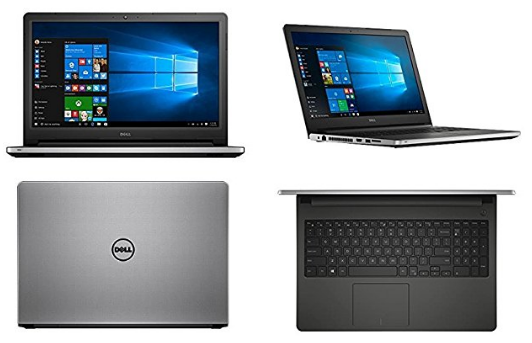 has an HDMI output
has an HDMI output
✔HP ProBook 440 G3 14″ Intel Core i5-6200U 2.4GHz / 4GB / 500GB
✖HP ProBook 640 G1 14″ Intel Core i5-4200M 2.5GHz / 8GB / 500GB
Devices with a HDMI or mini HDMI port can transfer high definition video and audio to a display.
Battery
1.Battery life
The device’s battery life (when in use) as given by the manufacturer. With a longer battery life you have to charge the device less often.
2.charge time
Unknown. Help us by suggesting a value. (HP ProBook 440 G3 14″ Intel Core i5-6200U 2.4GHz / 4GB / 500GB)
Unknown. Help us by suggesting a value. (HP ProBook 640 G1 14″ Intel Core i5-4200M 2.5GHz / 8GB / 500GB)
The time it takes to fully charge the battery.
3.battery power
Unknown. Help us by suggesting a value. (HP ProBook 440 G3 14″ Intel Core i5-6200U 2.4GHz / 4GB / 500GB)
Unknown. Help us by suggesting a value. (HP ProBook 640 G1 14″ Intel Core i5-4200M 2.5GHz / 8GB / 500GB)
(HP ProBook 640 G1 14″ Intel Core i5-4200M 2.5GHz / 8GB / 500GB)
Battery power, or battery capacity, represents the amount of electrical energy that a battery can store. More battery power can be an indication of longer battery life.
4.Has sleep-and-charge USB ports
✔HP ProBook 440 G3 14″ Intel Core i5-6200U 2.4GHz / 4GB / 500GB
✔HP ProBook 640 G1 14″ Intel Core i5-4200M 2.5GHz / 8GB / 500GB
Sleep-and-charge USB ports can charge electronic devices when the laptop is in sleep mode, hibernate mode, or even switched off.
5.Has a MagSafe power adapter
✖HP ProBook 440 G3 14″ Intel Core i5-6200U 2.4GHz / 4GB / 500GB
✖HP ProBook 640 G1 14″ Intel Core i5-4200M 2.5GHz / 8GB / 500GB
The MagSafe power adapter uses a power connector that is attached magnetically. When pulled or tugged, the connector will come out of the socket safely.
Features
1. has stereo speakers
has stereo speakers
✔HP ProBook 440 G3 14″ Intel Core i5-6200U 2.4GHz / 4GB / 500GB
✔HP ProBook 640 G1 14″ Intel Core i5-4200M 2.5GHz / 8GB / 500GB
Devices with stereo speakers deliver sound from independent channels on both left and right sides, creating a richer sound and a better experience.
2.has a socket for a 3.5 mm audio jack
✔HP ProBook 440 G3 14″ Intel Core i5-6200U 2.4GHz / 4GB / 500GB
✔HP ProBook 640 G1 14″ Intel Core i5-4200M 2.5GHz / 8GB / 500GB
With a standard mini jack socket, you can use the device with most headphones.
3.megapixels (front camera)
Unknown. Help us by suggesting a value. (HP ProBook 440 G3 14″ Intel Core i5-6200U 2.4GHz / 4GB / 500GB)
The number of megapixels determines the resolution of the images captured with the front camera. A higher megapixel count means that the front camera is capable of capturing more details, an essential factor for taking high-resolution selfies.
4.Stylus included
✖HP ProBook 440 G3 14″ Intel Core i5-6200U 2.4GHz / 4GB / 500GB
✖HP ProBook 640 G1 14″ Intel Core i5-4200M 2.5GHz / 8GB / 500GB
A stylus is a pen-like accessory that allows you to interact with the touchscreen with greater precision, and is particularly useful for drawing and writing.
5.Has a fingerprint scanner
✔HP ProBook 440 G3 14″ Intel Core i5-6200U 2.4GHz / 4GB / 500GB
✔HP ProBook 640 G1 14″ Intel Core i5-4200M 2.5GHz / 8GB / 500GB
The device has a fingerprint scanner which identifies the user.
6.number of microphones
More microphones result in better sound quality and enable the device to filter out background noise.
7.Uses 3D facial recognition
✖HP ProBook 440 G3 14″ Intel Core i5-6200U 2.4GHz / 4GB / 500GB
✖HP ProBook 640 G1 14″ Intel Core i5-4200M 2.5GHz / 8GB / 500GB
3D facial recognition systems, like Apple’s Face ID, provide secure biometric authentication for unlocking devices and authorizing mobile payments.
8.video recording (main camera)
Unknown. Help us by suggesting a value. (HP ProBook 440 G3 14″ Intel Core i5-6200U 2.4GHz / 4GB / 500GB)
Unknown. Help us by suggesting a value. (HP ProBook 640 G1 14″ Intel Core i5-4200M 2.5GHz / 8GB / 500GB)
The maximum resolution available for videos shot with the main camera. Although it may be possible to choose among other frame rates, those recordings usually have lower resolutions.
9.has voice commands
✖HP ProBook 440 G3 14″ Intel Core i5-6200U 2.4GHz / 4GB / 500GB
✖HP ProBook 640 G1 14″ Intel Core i5-4200M 2.5GHz / 8GB / 500GB
You can use your voice to control key functions of the device and you can easily access your device without pushing any button.
Price comparison
Cancel
Which are the best laptops?
Intel Core i5-4200M or Intel Core i5-6200u
- Come
- >
- Processors
- Comparison
- >
- Intel Core i5-4200M VS Intel Core
- Core i5-4200H
Compare - Core i5-6260U
Compare - Core i5-6300U
Compare - Core i5-6300HQ
Compare - On average, gaming performance is better by 2%.
- The speed of work in office applications and browsers is increased by 3%.

- The base frequency is 0.2 GHz higher.
- In complex multi-threaded applications, they are approximately equal.
- Prices for new processors are about the same.
Benefits Intel Core i5-4200M
Maximum frequency
3.1 GHz
0.3 GHz (10.7%) better than
vs
2.8 GHz
Release price
$225
-56 $ (-19.9%) better than
vs
281 $
Cinebench 10 32-bit single-core
4485
102 (2.3%) better than
vs
4383
Cinebench 10 32-bit multi-core
9962
90 (0.
000000001%) better than
vs
9872
Cinebench 11.
 5 64-bit single-core
5 64-bit single-core 118
3 (2.6%) better than
vs
115
Cinebench 15 64-bit multi-core
297
8 (2.8%) better than
vs
289
WinRAR 4.0
3051
1010 (49.5%) better than
vs
2041
3DMark06 CPU
3883
96 (2.5%) better than
vs
3787
Benefits of Intel Core i5-6200U
Comparison winner
Process
14 nm
-8 nm (-36.4%) better than
vs
22 nm
Number of transistors
1750 million
790 million (82.
 3%) better than
3%) better than vs
960 million
Value for money
76.4%
0.60000000000001% (0.8%) better than
vs
75.8%
Power Demand (TDP)
15 W
-22 W (-59.5%) better than
vs
37W
Passmark
3041
205 (7.2%) better than
vs
2836
x264 encoding pass 1
100
5 (5.3%) better than
vs
95
Geekbench 3 32-bit single-core
2726
4 (0.09999999999994%) better than
vs
2722
Geekbench 3 32-bit multi-core
5797
89 (1.
 6%) better than
6%) better than vs
5708
General Type
Notebook For laptops Architecture code name
Haswell Skylake Cores
A large number of cores improves performance in multi-threaded applications.
At the moment, increasing the number of processor cores is one of the priorities for increasing performance.2 2 Threads
More threads help the cores process information more efficiently. Real performance will be noticeable in very specific tasks (video editing, databases).
4 4 Process
22 nm 14 nm -8 nm (-36.4%) better than
Chip size
130 mm2 99 mm2 Number of transistors
960 million 1750 million 790 million (82.
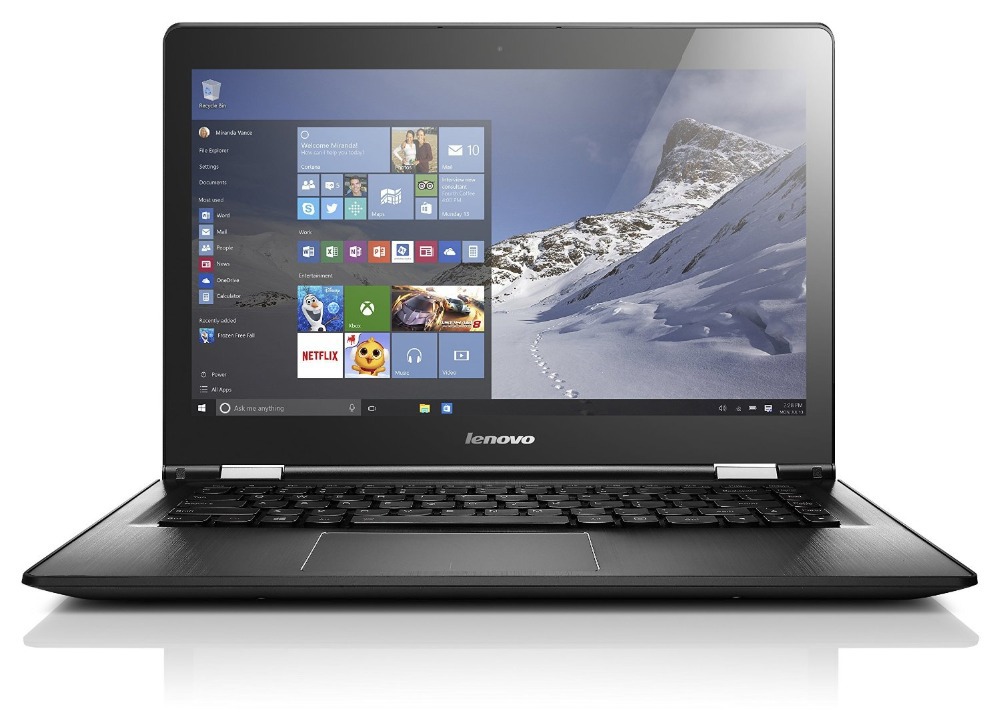 3%) better than
3%) better than Maximum frequency
Higher clock speed processors perform more calculations per second and thus provide better performance.
3.1GHz At 0.3 GHz (10.7%) better than
2.8 GHz 64 bit support
Max. number of processors in configuration
1 1 Socket
FCPGA946 FCBGA1356 AMD-V
Series
Intel Core i5 Intel Core i5 Release price
$225 -56 $ (-19.9%) better than
281 $ Value for money
The sum of all the advantages of the device divided by its price.
 The more%, the better the quality per unit price in comparison with all analogues.
The more%, the better the quality per unit price in comparison with all analogues. 75.8% 76.4% 0.60000000000001% (0.8%) better than
Maximum core temperature
100 °C 100 °C vPro
TXT
Intel Trusted Execution Technology for hardware-based malware protection. For each protected program, the processor allocates its own isolated section of RAM.
PCI Express revision
3 3.0 Number of PCI-Express lanes
16 12 Secure Key
MPX
n/a + Identity Protection
+ + SGX
n/a Yes with Intel® ME OS Guard
n/a + Flex Memory Access
n/a + Quick Sync
+ + eDP
+ + HDMI
+ + Maximum resolution via VGA
2880×1800@60Hz N/A My WiFi
n/a + Anti-Theft
+ no data Level 1 Cache
The fastest level of cache that works directly with the core.
 The larger the cache, the better the performance.
The larger the cache, the better the performance. 128 Kb 128 Kb Level 2 cache
512 KB 512 Kb Level 3 cache
3 Mb 3 Mb Power Demand (TDP)
Calculated thermal power indicates the average heat dissipation in load operation,
the larger the value, the more the requirements for cooling and power consumption increase.37W 15 W -22 W (-59.5%) better than
EDB
+ + Video memory size
2 GB 32 GB Clear Video
n/a + InTru 3D
+ + 4K support
n/a + DisplayPort
+ + DVI
no data + Smart Response
n/a + 3041 205 (7.
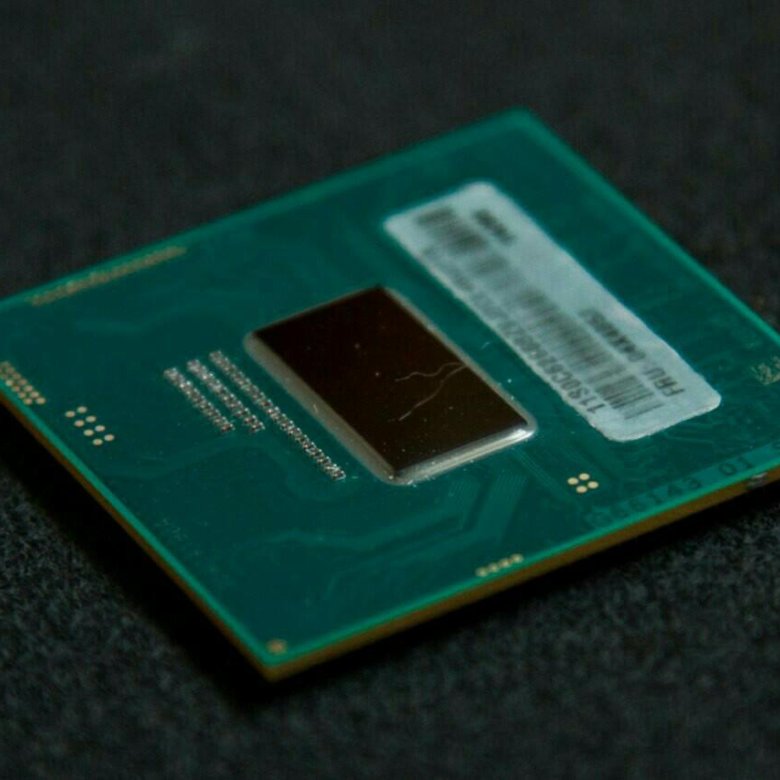 2%) better than
2%) better than Cinebench 10 32-bit single-core
4485 102 (2.3%) better than
4383 Cinebench 10 32-bit multi-core
9962 90 (0.
000000001%) better than
9872 Cinebench 11.5 64-bit single-core
118 3 (2.6%) better than
115 Cinebench 15 64-bit multi-core
297 8 (2.8%) better than
289 WinRAR 4.0
3051 1010 (49.5%) better than
2041 x264 encoding pass 1
95 100 5 (5.3%) better than
x264 encoding pass 2
19 19 TrueCrypt AES
2 2 3DMark06 CPU
3883 96 (2.
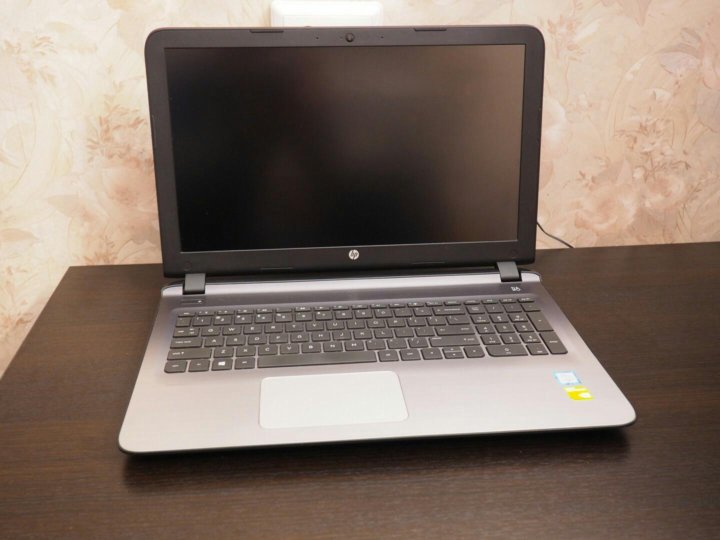 5%) better than
5%) better than 3787 Geekbench 2
6118 no data Geekbench 3 32-bit single-core
2722 2726 4 (0.099999999999994%) better than
Geekbench 3 32-bit multi-core
5708 5797 89 (1.6%) better than
Geekbench 4.0 64-bit single-core
n/a 3507 Geekbench 4.0 64-bit multi-core
n/a 6502 3DMark Fire Strike Physics
n/a 3700 Technologies and Supplementary Instructions Extended Instructions
Intel® SSE4.1, Intel® SSE4. 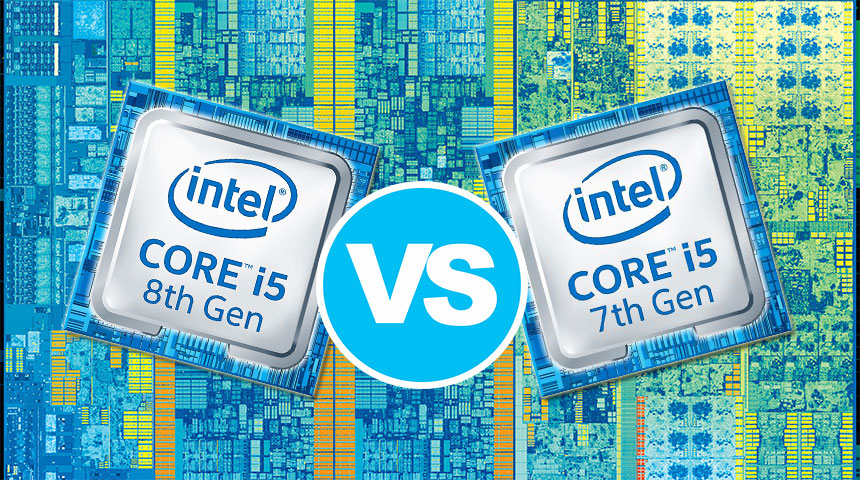 2, Intel® AVX2
2, Intel® AVX2 Turbo Boost
2.0 2.0 Idle States
Enhanced SpeedStep (EIST)
Technology from Intel that allows you to reduce the frequency of the processor to a minimum value to save power when the processor is idle.
Thermal Monitoring
Hyper-Threading
Intel hardware technology that allows multiple threads to be processed on each processor core. For server applications, the performance improvement is up to 30%.
AES-NI
Technology from Intel that speeds up the AES encryption process.
+ + AVX
The presence of AVX instructions improves performance in floating point and processor-intensive operations
applications.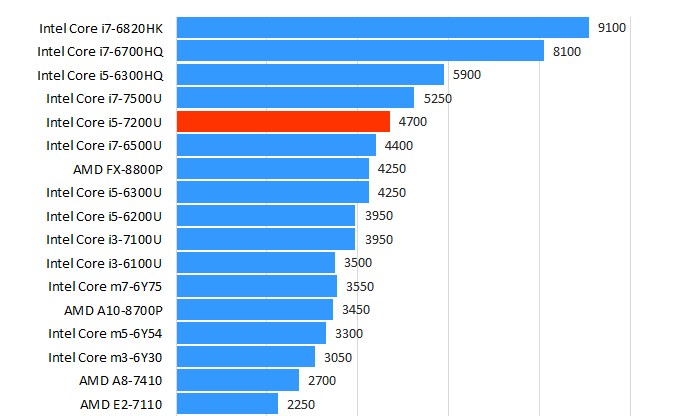
RAM parameters RAM types
DDR4-2133, LPDDR3-1866, DDR3L-1600 Allowable memory
The maximum amount of RAM that can be used with this processor.
32 GB 32 GB Number of memory channels
2 2 Virtualization technologies EPT
VT-d
Virtualization technology from Intel allows you to forward devices on the PCI bus to the guest operating system so that it can work with them using its standard tools.
Integrated graphics Maximum GPU clock
1. 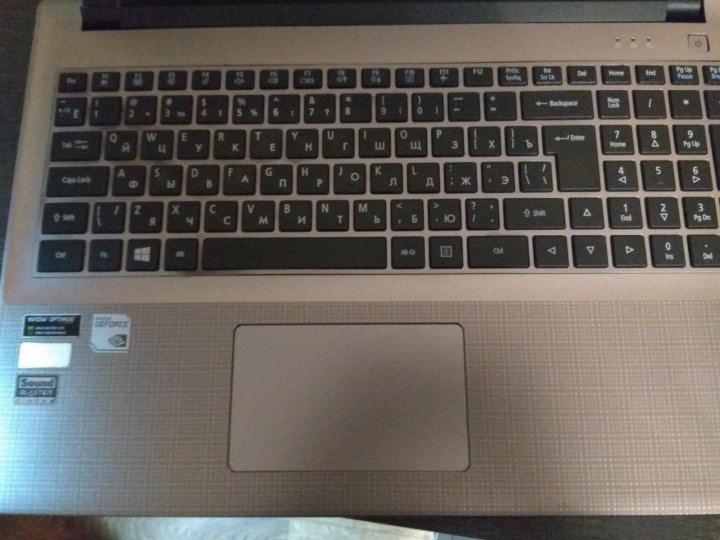 00 GHz
00 GHz Maximum number of monitors
3 3 Clear Video HD
Video core
The presence of the video core allows you to use your computer without using a video card.
+ + Maximum resolution via HDMI 1.4
3840×2160@60Hz 4096×2304@24Hz Maximum resolution via eDP
n/a 4096×2304@60Hz Maximum resolution via DisplayPort
3840×2160@60Hz 4096×2304@60Hz DirectX
11.2/12 12 OpenGL
4.3 4.5 Intel Core i5-6200U vs Intel Core i5-4200M 14 benchmark comparison
Intel Core i5-6200U: 14 nm, Skylake-U, 2 X 2.
 30 GHz, DDR4-2133 SO-DIMM.
30 GHz, DDR4-2133 SO-DIMM. Intel Core i5-4200M: 22 nm, Haswell, 2 X 2.50 GHz, DDR3L-1333 SO-DIMM
DDR3L-1600 SO-DIMM.Intel Core i5-6200U
Intel Core i5-4200M
Main Specifications
Comparison of Intel Core i5-6200U and Intel Core i5-4200M processors by core count, thread count, base clock speed and turbo clock speed. Pay attention to the model, the characteristics of which are higher, this is reflected in the overall performance.
2/4
Processor Threads
2/4
Yes
Hyper threads
Yes
no
Overclocking
no
2.
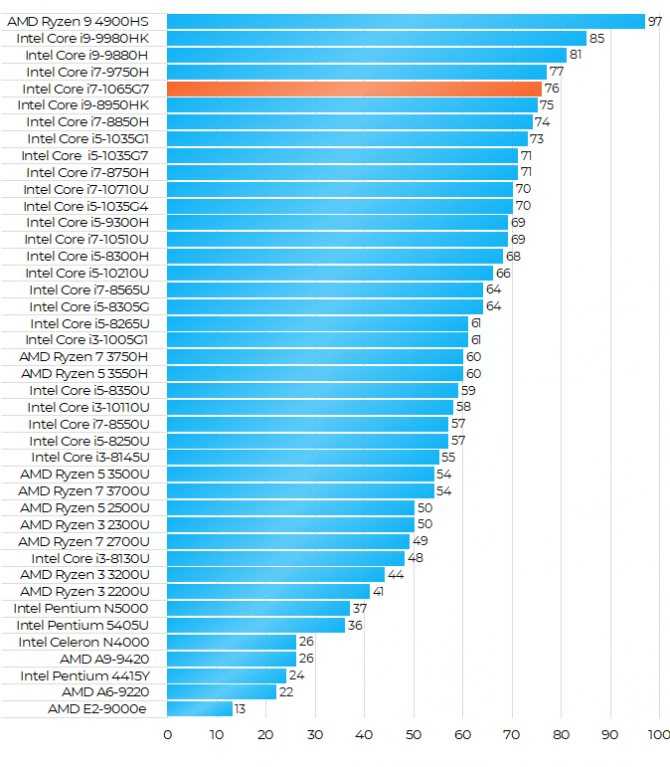 30GHz
30GHzFrequency
2.50GHz
2.80GHz
Turbo (1 core)
3.10GHz
2.70GHz
Turbo (2 cores)
3.10GHz
Generation and family
Comparison of processors by type of use (segment: mobile, desktop, laptop).
 Baseline comparison of Intel Core i5-6200U vs Intel Core i5-4200M.
Baseline comparison of Intel Core i5-6200U vs Intel Core i5-4200M. 2
Processor cores
2
Market price
ca. $185
9
Generation
7.5
iGPU (integrated graphics)
Processor comparison does not always show the full picture, since not all models are equipped with an integrated graphics core.
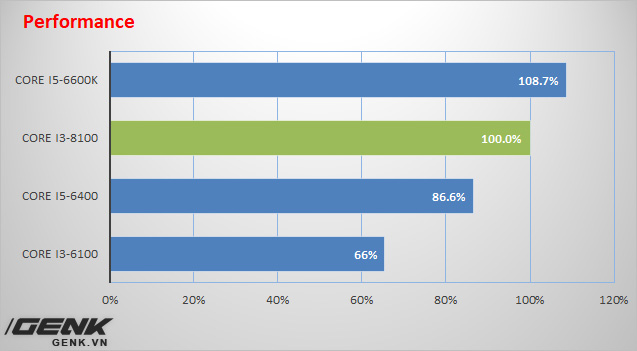 Therefore, when comparing {{cpu_name_1} with Intel Core i5-4200M, one column may be empty due to lack of iGPU specifications. If an embedded core is present, we recommend that you pay attention to the clock speed, because. other indicators are secondary.
Therefore, when comparing {{cpu_name_1} with Intel Core i5-4200M, one column may be empty due to lack of iGPU specifications. If an embedded core is present, we recommend that you pay attention to the clock speed, because. other indicators are secondary. Intel HD Graphics 520
GPU name
Intel HD Graphics 4600
0.30GHz
GPU frequency
0.40 GHz
1.
 00GHz
00GHzGPU (turbo)
1.15GHz
24
Execution units
twenty
192
shader
160
3
Maximum.
 displays
displays
3
9
Generation
7.5
12
Direct X
11.1
14 nm
Technology
22 nm
Q3/2015
Release date
Q2/2013
Hardware codec support
Comparison of Intel Core i5-6200U vs Intel Core i5-4200M processors in terms of hardware support for various codecs and add-ons.
 An exclusively introductory section that is not taken into account by benchmarks in synthetic performance tests.
An exclusively introductory section that is not taken into account by benchmarks in synthetic performance tests. Decode/Encode
h365 8bit
no
decode
h365 10bit
no
Decode/Encode
h364
Decode/Encode
Decode/Encode
VP8
no
decode
WP9
no
Decode/Encode
AVC
Decode/Encode
decode
VK-1
decode
Decode/Encode
JPEG
decode
Memory specifications
Compare what type of memory is supported by the processors, how much maximum memory can be used, and study the memory bus bandwidth and clock speed.
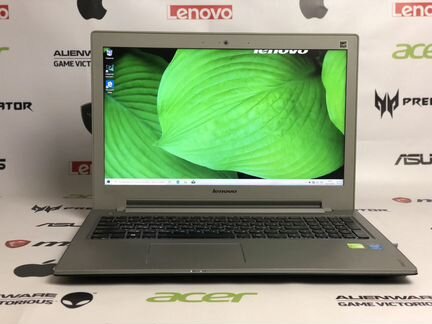
3.0
PCI version
3.0
12
PCIe lanes
16
DDR4-2133 SODIMM
Memory type
DDR3L-1333 SODIMM
DDR3L-1600 SODIMM32GB
Maximum.
 Memory
Memory
32GB
2
Memory channels
2
no
ECC
no
Yes
AES-NI
Yes
Temperature (TDP)
The TDP of the Intel Core i5-6200U and Intel Core i5-4200M processors displays all information on the thermal package.
 Here you can easily conclude which processor will consume more electricity and, accordingly, require a larger power supply. We recommend paying attention to a model with a lower TDP, since the system of components requires a reserve of power not only for the power supply, but also for the cooling system.
Here you can easily conclude which processor will consume more electricity and, accordingly, require a larger power supply. We recommend paying attention to a model with a lower TDP, since the system of components requires a reserve of power not only for the power supply, but also for the cooling system. 15W
Estimated power
37W
—
TDP up
—
—
TDP down
—
—
Connection max.
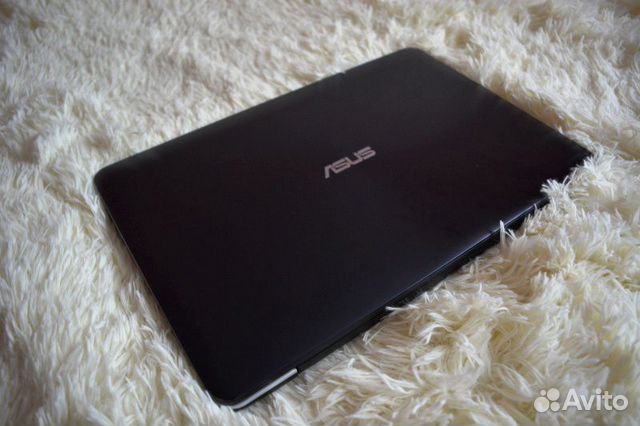
100°C
Additional Specifications
kernel architecture, motherboard socket, and processor release dates.
3.00MB
L3 cache
3.00MB
skylake-u
Architecture
Haswell
14 nm
Technology
22 nm
VT-x, VT-x EPT, VT-d
Virtualization
VT-x, VT-x EPT, VT-d
BGA 1356
socket
PGA 946
Q3/2015
Release date
Q4/2013
Terms of use
unknown
Used in
unknown
Cinebench R20 (single core)
The Cinebench R20 benchmark is an updated version of the Cinebench R15 benchmark, similarly to the previous version developed on the Cinema 4 Suite software.
 In this version, the benchmark tests the performance of a single processor core without regard to hyperthreading. We present the updated results for review.
In this version, the benchmark tests the performance of a single processor core without regard to hyperthreading. We present the updated results for review. Intel Core i5-6200U
2x 2.30 GHz (2.80 GHz) HT282 (100%)
Intel Core i5-4200M
2x 2.50 GHz (3.10 GHz) HTCinebench R20 (multi-core)
Based on the Cinema 4 Suite, Maxon has developed an accurate processor performance benchmark — Cinebench R20. Processing and compute scenarios display processor efficiency and performance across all cores and support for hyper-threading.

Intel Core i5-6200U
2x 2.30 GHz (2.80 GHz) HT735 (100%)
Intel Core i5-4200M
2x 2.50 GHz (3.10 GHz) HTCinebench R15 (single core)
Cinebench R15 benchmark for testing processors in single-core mode without hyperthreading. Real performance in rendering testing is excellent across all processor segments. Check out the Cinebench R15 results and scores below.
Intel Core i5-6200U
2x 2. 30 GHz (2.80 GHz) HT
30 GHz (2.80 GHz) HT119 (100%)
Intel Core i5-4200M
2x 2.50 GHz (3.10 GHz) HT115 (96%)
Cinebench R15 (multi-core)
Cinebench R15 benchmark supporting all processor cores in testing and taking into account hyperthreading. Developed on the basis of proprietary Maxon software — Cinema 4 Suite. The number of points in the Cinebench R15 evaluation is presented below.
Intel Core i5-6200U
2x 2. 30 GHz (2.80 GHz) HT
30 GHz (2.80 GHz) HT290 (98%)
Intel Core i5-4200M
2x 2.50 GHz (3.10 GHz) HT295 (100%)
iGPU — FP32 performance (gigaflops single precision)
Benchmark for testing iGPU (integrated graphics core in the central processing unit). The overall graphics performance is tested to evaluate the speed of the video chip. Evaluation scores are presented in the rating below. Please note that not all processor manufacturers implement an internal graphics core, so this parameter does not affect the overall performance results, but is considered a good plus.

Intel Core i5-6200U
2x 2.30 GHz (2.80 GHz) HT384 (100%)
Intel Core i5-4200M
2x 2.50 GHz (3.10 GHz) HT368 (95%)
Geekbench 5 64 bit (single core)
Many people are wondering how good the Geekbench 5 scores are in testing processors — we answer, they are accurate and unbiased to brands. The higher the Geekbench 5 score in single core CPU benchmark mode, the better.
 Look at the results or compare them.
Look at the results or compare them. Intel Core i5-6200U
2x 2.30 GHz (2.80 GHz) HT566 (84%)
Intel Core i5-4200M
2x 2.50 GHz (3.10 GHz) HT667 (100%)
Geekbench 5 64-bit (multi-core)
Geekbench 5 (64-bit version) for testing the performance of processors in the mode of using all cores and threads. The Geekbench 5 benchmark for multi-core models shows in points how productive and fast the chip is in the review or comparison.
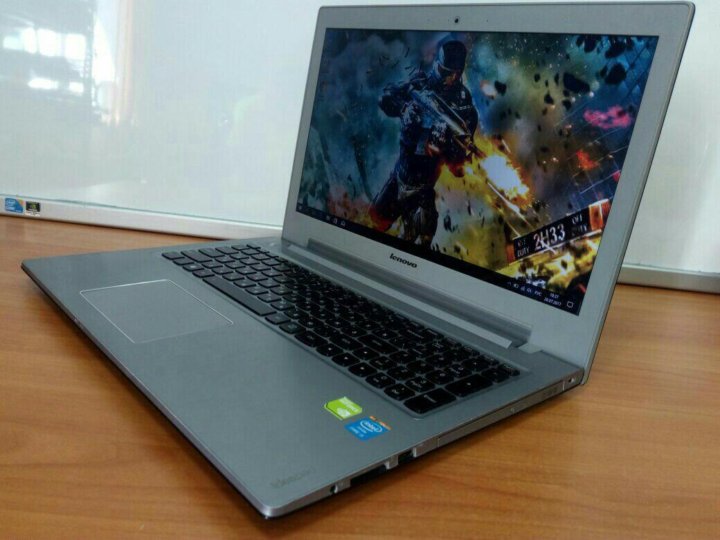
Intel Core i5-6200U
2x 2.30 GHz (2.80 GHz) HT1346 (93%)
Intel Core i5-4200M
2x 2.50 GHz (3.10 GHz) HT1433 (100%)
Blender 2.81 (bmw27)
Benchmark Blender 2.81 (bmw27) tests the gaming performance of the processor, which is verified by running various scenarios for rendering 3d models of the image. The test result is shown below.
Intel Core i5-6200U
2x 2. 30 GHz (2.80 GHz) HT
30 GHz (2.80 GHz) HT18781 (100%)
Intel Core i5-4200M
2x 2.50 GHz (3.10 GHz) HTGeekbench 3 64 bit (single core)
Geekbench 3 64-bit (single-core) is an early version benchmark designed to test the processor in severe scenarios — performing calculations and rendering in single-core mode. The performance test results are shown below.
Intel Core i5-6200U
2x 2.30 GHz (2.80 GHz) HT2949 (100%)
Intel Core i5-4200M
2x 2. 50 GHz (3.10 GHz) HT
50 GHz (3.10 GHz) HT2710 (91%)
Geekbench 3 64-bit (multi-core)
Geekbench 3 64-bit (multi-core) is the first version of a professional synthetic benchmark that tests CPU performance in various rendering and math scenarios. The benchmark uses all cores and enables processor hyperthreading.
Intel Core i5-6200U
2x 2.30 GHz (2.80 GHz) HT6169 (100%)
Intel Core i5-4200M
2x 2. 50 GHz (3.10 GHz) HT
50 GHz (3.10 GHz) HT5705 (92%)
Cinebench R11.5 64 bit (single core)
The Cinebench R11.5 benchmark for single core processors is the first version of a professional synthetic benchmark application. Cinebench R11.5 performs hyper-threading-free testing of a single CPU core based on the Cinema 4 Suite application. Well suited for assessing the speed of early generation processors.
Intel Core i5-6200U
2x 2.30 GHz (2.80 GHz) HT135 (100%)
Intel Core i5-4200M
2x 2.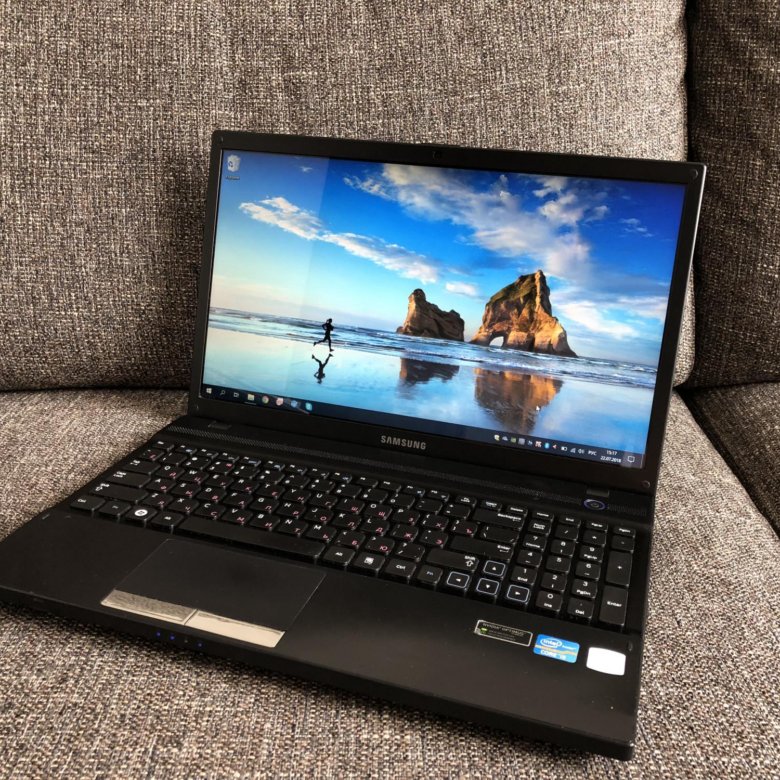 50 GHz (3.10 GHz) HT
50 GHz (3.10 GHz) HT132 (97%)
Cinebench R11.5 64 bit (multi-core)
Cinebench R11.5 for multi-core processors with hyperthreading. Cinebench R11.5 tests the performance of all processor cores in Cinema 4 Suite software. The results of evaluating the performance of all processor cores in Cinebench R11.5 are presented below.
Intel Core i5-6200U
2x 2.30 GHz (2.80 GHz) HT319 (99%)
Intel Core i5-4200M
2x 2. 50 GHz (3.10 GHz) HT
50 GHz (3.10 GHz) HT321 (100%)
Cinebench R11.5 64bit (iGPU, OpenGL)
Cinebench R11.5 benchmark for testing the performance of the integrated graphics core in the central processor. An early version of the benchmark that shows an accurate estimate of the performance of the integrated graphics card in an OpenGL application.
Intel Core i5-6200U
2x 2.30 GHz (2.80 GHz) HT308 (100%)
Intel Core i5-4200M
2x 2. 50 GHz (3.10 GHz) HT
50 GHz (3.10 GHz) HT162 (52%)
PassMark CPU Mark
The PassMark score is the most authoritative among advanced users. It is the PassMark benchmark that is the leader in testing processor performance. The results of evaluating the speed of the processor are checked in the conditions of complex mathematical calculations and rendering of 3D models.
Intel Core i5-6200U
2x 2.30 GHz (2.80 GHz) HT4098 (97%)
Intel Core i5-4200M
2x 2.
9000u 900u 900u 9001 9
Family
Gaming speed
Core i5-4200M
48.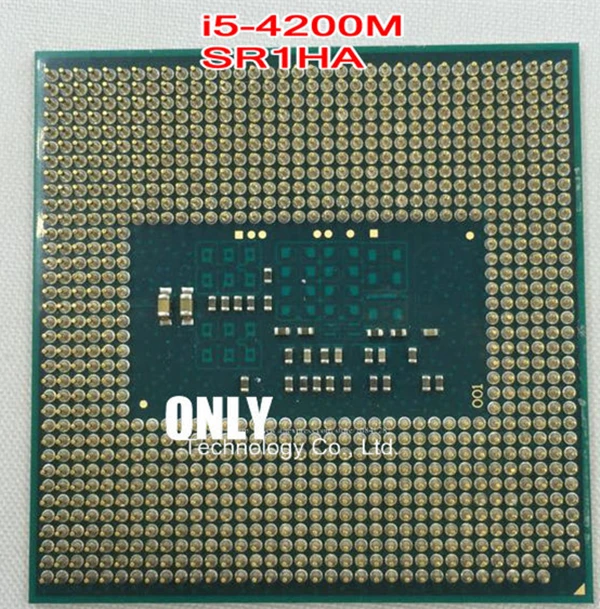 2 (+3.5%)
2 (+3.5%)
Core i5-6200U
46.5
Performance in games and similar applications, according to our tests.
The performance of 4 cores, if any, and performance per core has the greatest impact on the result, since most games do not fully use more than 4 cores.
The speed of caches and working with RAM is also important.
Speed in office use
Core i5-4200M
53 (+4.7%)
Core i5-6200U
50.5
Performance in everyday work such as browsers and office programs.
The performance of 1 core has the greatest impact on the result, since most of these applications use only one, ignoring the rest.
Similarly, many professional applications such as various CADs ignore multi-threaded performance.
Speed in heavy applications
Core i5-4200M
25.2 (+2.4%)
Core i5-6200U
24.6
Performance in resource-intensive tasks loading a maximum of 8 cores.
The performance of all cores and their number has the greatest impact on the result, since most of these applications willingly use all the cores and increase the speed accordingly.
At the same time, certain periods of work can be demanding on the performance of one or two cores, for example, applying filters in the editor.
Data obtained from tests by users who tested their systems with and without overclocking. Thus, you see the average values corresponding to the processor.
Speed of numerical operations
Simple household tasks |
|
Core i5-4200M 48.9 (+4.1%) Core i5-6200U 46.9 |
Demanding games and tasks |
|
Core i5-4200M 18.1 (+1.1%) Core i5-6200U 17.9 |
Extreme |
|
Core i5-4200M 3. Core i5-6200U 3.5 |
Different tasks require different CPU strengths. A system with few fast cores and low memory latency will be fine for the vast majority of games, but will be inferior to a system with a lot of slow cores in a rendering scenario.
We believe that a minimum of 4/4 (4 physical cores and 4 threads) processor is suitable for a budget gaming PC. At the same time, some games can load it at 100%, slow down and freeze, and performing any tasks in the background will lead to a drop in FPS.
Ideally, the budget shopper should aim for a minimum of 4/8 and 6/6. A gamer with a big budget can choose between 6/12, 8/8 and 8/16. Processors with 10 and 12 cores can perform well in games with high frequency and fast memory, but are overkill for such tasks. Also, buying for the future is a dubious undertaking, since in a few years many slow cores may not provide sufficient gaming performance.
When choosing a processor for your work, consider how many cores your programs use. For example, photo and video editors can use 1-2 cores when working with filtering, and rendering or converting in the same editors already uses all threads.
Data obtained from tests by users who tested their systems both with overclocking (maximum value in the table) and without (minimum). A typical result is shown in the middle, the more filled in the color bar, the better the average result among all tested systems.
Benchmarks
Benchmarks were run on stock hardware, that is, without overclocking and with factory settings. Therefore, on overclocked systems, the points can noticeably differ upwards. Also, small performance changes may be due to the BIOS version.
Geekbench 3 Single Core
Intel Core i5-4200M
2710
Intel Core i5-6200U
2949 (+8.1%)
Cinebench R11.5
Intel Core i5-4200M
1.32
Intel Core i5-6200u
1. 35 (+2.2%)
35 (+2.2%)
Cinebench R11.5
Intel Core i5-4200M
3.21 (+0.6%)
Intel i5-6200u
3.19
9
1900 , OpenGL
Intel Core i5-4200M
95
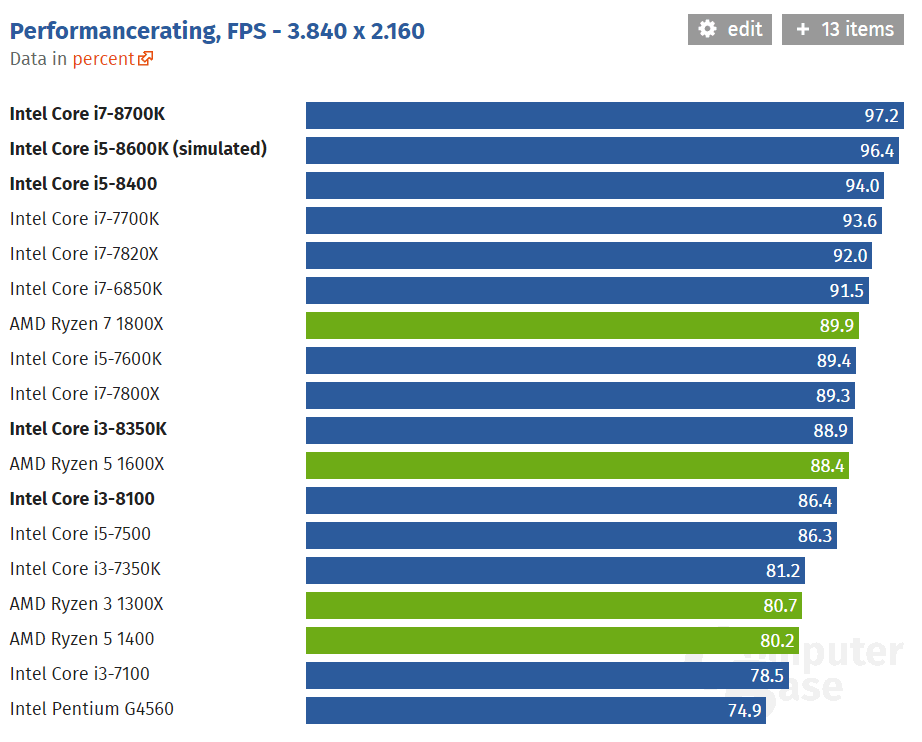

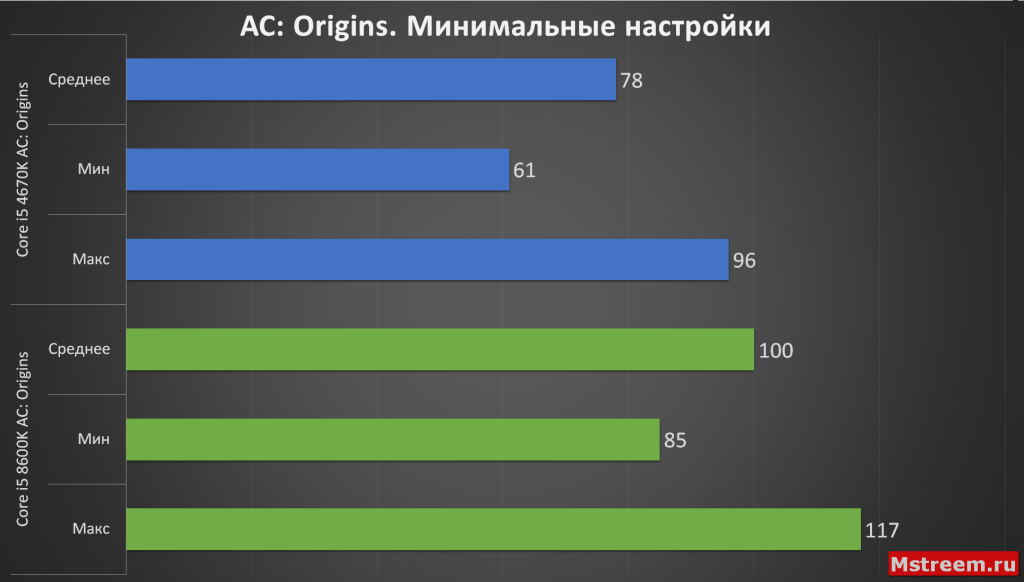 Significantly affects the speed in games and applications that are demanding on the frequency of the CPU.
Significantly affects the speed in games and applications that are demanding on the frequency of the CPU. 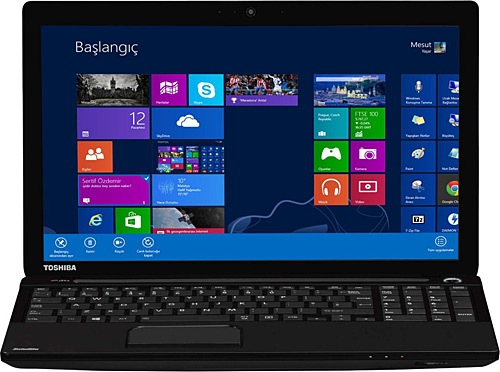 Standard and designed for mobile devices. In the second version, the processor can be soldered on the motherboard.
Standard and designed for mobile devices. In the second version, the processor can be soldered on the motherboard. Video core
Integrated graphics core Allows you to use your computer without a discrete graphics card.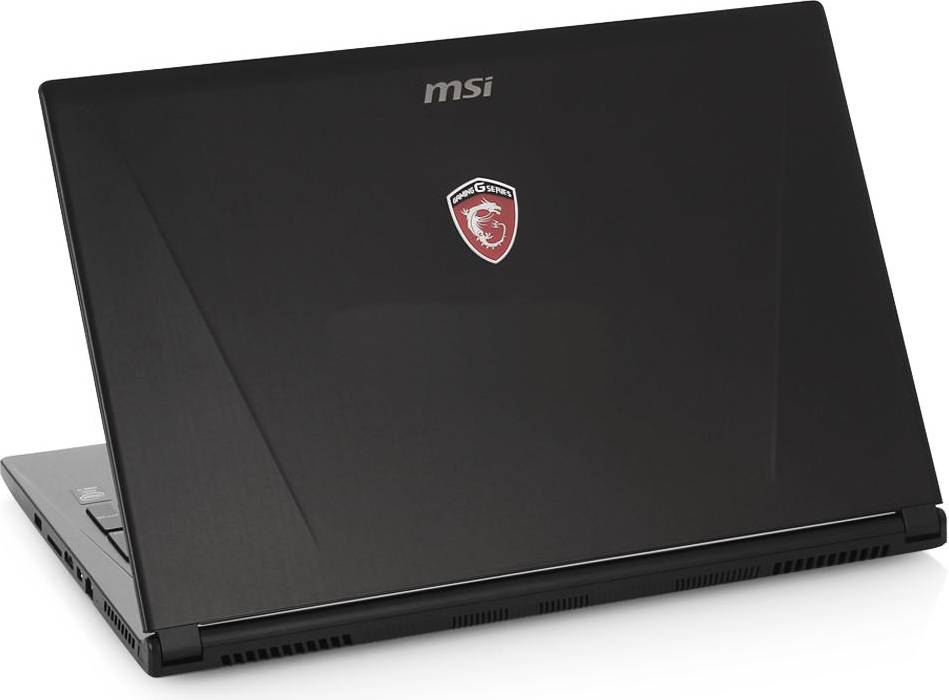 The monitor is connected to the video output on the motherboard. If earlier integrated graphics made it possible to simply work at a computer, today it can replace budget video accelerators and makes it possible to play most games at low settings. The monitor is connected to the video output on the motherboard. If earlier integrated graphics made it possible to simply work at a computer, today it can replace budget video accelerators and makes it possible to play most games at low settings. |
Intel® HD Graphics 4600 | Intel® HD Graphics 520 |
| GPU base clockFrequency of 2D and idle operation. | 400 MHz | 300 MHz |
| Maximum GPU frequencyMaximum 3D frequency. | 1150MHz | 1000 MHz |
| Intel® Wireless Display (Intel® WiDi) Supports Wireless Display technology using the Wi-Fi 802.11n standard. Thanks to it, a monitor or TV equipped with the same technology does not require a cable to connect. | No data | No data |
Supported monitorsThe maximum number of monitors that can be connected to the integrated video core at the same time. |
3 | 3 |
RAM
| Maximum RAM Amount of RAM that can be installed on the motherboard with this processor. | 32 GB | 32 GB |
| Supported type of RAM The type of RAM depends on its frequency and timings (speed), availability, price. | DDR3L 1333/1600 | DDR4-2133, LPDDR3-1866, DDR3L-1600 |
| RAM Channels The multi-channel memory architecture increases data transfer speed. On desktop platforms, two-channel, three-channel and four-channel modes are available. | 2 | 2 |
| Memory bandwidth | 25.6 GB/s | 34.1 GB/s |
ECC memory Support for error-correcting memory that is used in servers. Usually more expensive than usual and requires more expensive server components. However, second-hand server processors, Chinese motherboards and ECC memory sticks, which are sold relatively cheaply in China, have become widespread. Usually more expensive than usual and requires more expensive server components. However, second-hand server processors, Chinese motherboards and ECC memory sticks, which are sold relatively cheaply in China, have become widespread. |
No data | No data |
PCI
| PCI-E The PCI Express computer bus version. The bandwidth and power limit depend on the version. There is backward compatibility. | 3 | 3 |
| PCI configuration options | 1×16 or 2×8 or 1×8 2×4 | 1×16 or 2×8 or 1×8 2×4 |
| Number of PCI lanes | 16 | 1×16 or 2×8 or 1×8 2×4 |
Data Security
AES-NI The AES command set extension speeds up applications that use appropriate encryption.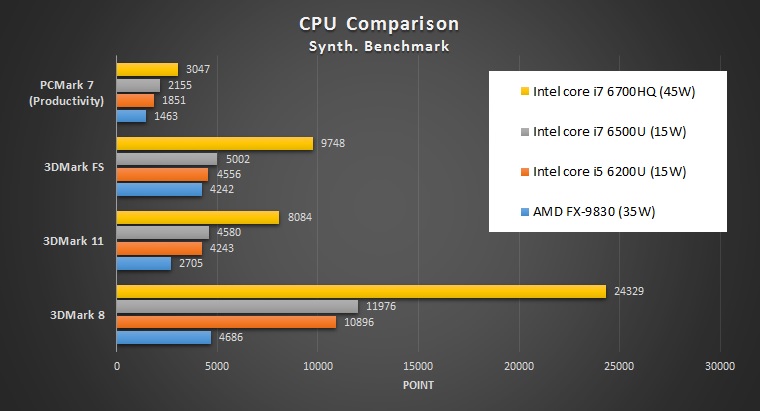 |
No data | No data |
| Intel® Secure Key An RDRAND instruction that allows you to create a high performance random number generator. | No data | No data |
Decoration
| Dimensions | No data | No data |
| Supported sockets | No data | No data |
| Maximum processors per motherboard | No data | No data |

 5
5